
How to Write an Academic Essay with References and Citations
#scribendiinc
Written by Scribendi
If you're wondering how to write an academic essay with references, look no further. In this article, we'll discuss how to use in-text citations and references, including how to cite a website, how to cite a book, and how to cite a Tweet, according to various style guides.

You might need to cite sources when writing a paper that references other sources. For example, when writing an essay, you may use information from other works, such as books, articles, or websites. You must then inform readers where this information came from. Failure to do so, even accidentally, is plagiarism—passing off another person's work as your own.
You can avoid plagiarism and show readers where to find information by using citations and references.
Citations tell readers where a piece of information came from. They take the form of footnotes, endnotes, or parenthetical elements, depending on your style guide. In-text citations are usually placed at the end of a sentence containing the relevant information.
A reference list , bibliography, or works cited list at the end of a text provides additional details about these cited sources. This list includes enough publication information allowing readers to look up these sources themselves.
Referencing is important for more than simply avoiding plagiarism. Referring to a trustworthy source shows that the information is reliable. Referring to reliable information can also support your major points and back up your argument.
Learning how to write an academic essay with references and how to use in-text citations will allow you to cite authors who have made similar arguments. This helps show that your argument is objective and not entirely based on personal biases.
How Do You Determine Which Style Guide to Use?

Often, a professor will assign a style guide. The purpose of a style guide is to provide writers with formatting instructions. If your professor has not assigned a style guide, they should still be able to recommend one.
If you are entirely free to choose, pick one that aligns with your field (for example, APA is frequently used for scientific writing).
Some of the most common style guides are as follows:
AP style for journalism
Chicago style for publishing
APA style for scholarly writing (commonly used in scientific fields)
MLA style for scholarly citations (commonly used in English literature fields)
Some journals have their own style guides, so if you plan to publish, check which guide your target journal uses. You can do this by locating your target journal's website and searching for author guidelines.
How Do You Pick Your Sources?
When learning how to write an academic essay with references, you must identify reliable sources that support your argument.
As you read, think critically and evaluate sources for:
Objectivity
Keep detailed notes on the sources so that you can easily find them again, if needed.
Tip: Record these notes in the format of your style guide—your reference list will then be ready to go.
How to Use In-Text Citations in MLA
An in-text citation in MLA includes the author's last name and the relevant page number:
(Author 123)
How to Cite a Website in MLA

Here's how to cite a website in MLA:
Author's last name, First name. "Title of page."
Website. Website Publisher, date. Web. Date
retrieved. <URL>
With information from a real website, this looks like:
Morris, Nancy. "How to Cite a Tweet in APA,
Chicago, and MLA." Scribendi. Scribendi
Inc., n.d. Web. 22 Dec. 2021.
<https://www.scribendi.com/academy/articles/how_to_cite_a_website.en.html>
How Do You Cite a Tweet in MLA ?
MLA uses the full text of a short Tweet (under 140 characters) as its title. Longer Tweets can be shortened using ellipses.
MLA Tweet references should be formatted as follows:
@twitterhandle (Author Name). "Text of Tweet." Twitter, Date Month, Year, time of
publication, URL.
With information from an actual Tweet, this looks like:
@neiltyson (Neil deGrasse Tyson). "You can't use reason to convince anyone out of an
argument that they didn't use reason to get into." Twitter, 29 Sept. 2020, 10:15 p.m.,
https://twitter.com/neiltyson/status/1311127369785192449 .
How to Cite a Book in MLA
Here's how to cite a book in MLA:
Author's last name, First name. Book Title. Publisher, Year.
With publication information from a real book, this looks like:
Montgomery, L.M. Rainbow Valley. Frederick A. Stokes Company, 1919.
How to Cite a Chapter in a Book in MLA
Author's last name, First name. "Title of Chapter." Book Title , edited by Editor Name,
Publisher, Year, pp. page range.
With publication information from an actual book, this looks like:
Ezell, Margaret J.M. "The Social Author: Manuscript Culture, Writers, and Readers." The
Broadview Reader in Book History , edited by Michelle Levy and Tom Mole, Broadview
Press, 2015,pp. 375–394.
How to Cite a Paraphrase in MLA
You can cite a paraphrase in MLA exactly the same way as you would cite a direct quotation.
Make sure to include the author's name (either in the text or in the parenthetical citation) and the relevant page number.
How to Use In-Text Citations in APA
In APA, in-text citations include the author's last name and the year of publication; a page number is included only if a direct quotation is used:
(Author, 2021, p. 123)
How to Cite a Website in APA
Here's how to cite a website in APA:
Author, A. A., & Author, B. B. (Year, Month. date of publication). Title of page. https://URL
Morris, N. (n.d.). How to cite a Tweet in APA, Chicago, and MLA.
https://www.scribendi.com/academy/articles/how_to_cite_a_website.en.html
Tip: Learn more about how to write an academic essay with references to websites .
How Do You Cite a Tweet in APA ?
APA refers to Tweets using their first 20 words.
Tweet references should be formatted as follows:
Author, A. A. [@twitterhandle). (Year, Month. date of publication). First 20 words of the
Tweet. [Tweet] Twitter. URL
When we input information from a real Tweet, this looks like:
deGrasse Tyson, N. [@neiltyson]. (2020, Sept. 29). You can't use reason to convince anyone
out of an argument that they didn't use reason to get into. [Tweet] Twitter.
https://twitter.com/neiltyson/status/1311127369785192449

How to Cite a Book in APA
Here's how to cite a book in APA:
Author, A. A. (Year). Book title. Publisher.
For a real book, this looks like:
Montgomery, L. M. (1919). Rainbow valley.
Frederick A. Stokes Company.
How to Cite a Chapter in a Book in APA
Author, A. A. (Year). Chapter title. In Editor Name (Ed.), Book Title (pp. page range).
With information from a real book, this looks like:
Ezell, M. J. M. (2014). The social author: Manuscript culture, writers, and readers. In
Michelle Levy and Tom Mole (Eds.), The Broadview Reader in Book History (pp. 375–
394). Broadview Press.
Knowing how to cite a book and how to cite a chapter in a book correctly will take you a long way in creating an effective reference list.

How to Cite a Paraphrase in APA
You can cite a paraphrase in APA the same way as you would cite a direct quotation, including the author's name and year of publication.
In APA, you may also choose to pinpoint the page from which the information is taken.
Referencing is an essential part of academic integrity. Learning how to write an academic essay with references and how to use in-text citations shows readers that you did your research and helps them locate your sources.
Learning how to cite a website, how to cite a book, and how to cite a paraphrase can also help you avoid plagiarism —an academic offense with serious consequences for your education or professional reputation.
Scribendi can help format your citations or review your whole paper with our Academic Editing services .
Take Your Essay from Good to Great
Hire an expert academic editor , or get a free sample, about the author.

Scribendi's in-house editors work with writers from all over the globe to perfect their writing. They know that no piece of writing is complete without a professional edit, and they love to see a good piece of writing transformed into a great one. Scribendi's in-house editors are unrivaled in both experience and education, having collectively edited millions of words and obtained numerous degrees. They love consuming caffeinated beverages, reading books of various genres, and relaxing in quiet, dimly lit spaces.
Have You Read?
"The Complete Beginner's Guide to Academic Writing"
Related Posts

APA Style and APA Formatting

How to Research a Term Paper

MLA Formatting and MLA Style: An Introduction
Upload your file(s) so we can calculate your word count, or enter your word count manually.
We will also recommend a service based on the file(s) you upload.
English is not my first language. I need English editing and proofreading so that I sound like a native speaker.
I need to have my journal article, dissertation, or term paper edited and proofread, or I need help with an admissions essay or proposal.
I have a novel, manuscript, play, or ebook. I need editing, copy editing, proofreading, a critique of my work, or a query package.
I need editing and proofreading for my white papers, reports, manuals, press releases, marketing materials, and other business documents.
I need to have my essay, project, assignment, or term paper edited and proofread.
I want to sound professional and to get hired. I have a resume, letter, email, or personal document that I need to have edited and proofread.
Prices include your personal % discount.
Prices include % sales tax ( ).

How to Reference in an Essay (9 Strategies of Top Students)
Are you feeling overwhelmed by referencing?
When you’re first asked to do referencing in an essay it can be hard to get your head around it. If it’s been a while since you were first taught how to reference, it can be intimidating to ask again how to do it!
I have so many students who consistently lose marks just because they didn’t get referencing right! They’re either embarrassed to ask for extra help or too lazy to learn how to solve the issues.
So, here’s a post that will help you solve the issues on your own.
Already think you’re good at referencing? No worries. This post goes through some surprising and advanced strategies for anyone to improve no matter what level you are at!
In this post I’m going to show you exactly how to reference in an essay. I’ll explain why we do it and I’ll show you 9 actionable tips on getting referencing right that I’m sure you will not have heard anywhere else!
The post is split into three parts:
- What is a Reference and What is a Citation?
- Why Reference? (4 Things you Should Know)
- How to Reference (9 Strategies of Top Students)
If you think you’ve already got a good understanding of the basics, you can jump to our 9 Advanced Strategies section.
Part 1: What is a Reference and What is a Citation?
What is a citation.
An in-text mention of your source. A citation is a short mention of the source you got the information from, usually in the middle or end of a sentence in the body of your paragraph. It is usually abbreviated so as not to distract the reader too much from your own writing. Here’s two examples of citations. The first is in APA format. The second is in MLA format:
- APA: Archaeological records trace the original human being to equatorial Africa about 250,000–350,000 years ago (Schlebusch & Jakobsson, 2018) .
- MLA: Archaeological records trace the original human being to equatorial Africa about 250,000–350,000 years ago (Schlebusch and Jakobsson 1) .
In APA format, you’ve got the authors and year of publication listed. In MLA format, you’ve got the authors and page number listed. If you keep reading, I’ll give some more tips on formatting further down in this article.
And a Reference is:
What is a Reference?
A reference is the full details of a source that you list at the end of the article. For every citation (see above) there needs to be a corresponding reference at the end of the essay showing more details about that source. The idea is that the reader can see the source in-text (i.e. they can look at the citation) and if they want more information they can jump to the end of the page and find out exactly how to go about finding the source.
Here’s how you would go about referencing the Schlebusch and Jakobsson source in a list at the end of the essay. Again, I will show you how to do it in APA and MLA formats:
- APA: Schlebusch, C. & Jakobsson, M. (2018). Tales of Human Migration, Admixture, and Selection in Africa. Annual Review of Genomics and Human Genetics , 11 (33), 1–24.
- MLA: Schlebusch, Carina and Mattias Jakobsson. “Tales of Human Migration, Admixture, and Selection in Africa.” Annual Review of Genomics and Human Genetics , vol. 11, no. 33, 2018, pp. 1–24.
In strategy 1 below I’ll show you the easiest and fool proof way to write these references perfectly every time.
One last quick note: sometimes we say ‘reference’ when we mean ‘citation’. That’s pretty normal. Just roll with the punches. It’s usually pretty easy to pick up on what our teacher means regardless of whether they use the word ‘reference’ or ‘citation’.
Part 2: Why Reference in an Essay? (4 Things you Should Know)
Referencing in an essay is important. By the time you start doing 200-level courses, you probably won’t pass the course unless you reference appropriately. So, the biggest answer to ‘why reference?’ is simple: Because you Have To!
Okay let’s be serious though … here’s the four top ‘real’ reasons to reference:
1. Referencing shows you Got an Expert’s Opinion
You can’t just write an essay on what you think you know. This is a huge mistake of beginning students. Instead this is what you need to do:
Top Tip: Essays at university are supposed to show off that you’ve learned new information by reading the opinions of experts.
Every time you place a citation in your paragraph, you’re showing that the information you’re presenting in that paragraph was provided to you by an expert. In other words, it means you consulted an expert’s opinion to build your knowledge.
If you have citations throughout the essay with links to a variety of different expert opinions, you’ll show your marker that you did actually genuinely look at what the experts said with an open mind and considered their ideas.
This will help you to grow your grades.
2. Referencing shows you read your Assigned Readings
Your teacher will most likely give you scholarly journal articles or book chapters to read for homework between classes. You might have even talked about those assigned readings in your seminars and tutorials.
Great! The assigned readings are very important to you.
You should definitely cite the assigned readings relevant to your essay topic in your evaluative essay (unless your teacher tells you not to). Why? I’ll explain below.
- Firstly, the assigned readings were selected by your teacher because your teacher (you know, the person who’s going to mark your essay) believes they’re the best quality articles on the topic. Translation: your teacher gave you the best source you’re going to find. Make sure you use it!
- Secondly, by citing the assigned readings you are showing your teacher that you have been paying attention throughout the course. You are showing your teacher that you have done your homework, read those assigned readings and paid attention to them. When my students submit an essay that has references to websites, blogs, wikis and magazines I get very frustrated. Why would you cite low quality non-expert sources like websites when I gave you the expert’s article!? Really, it frustrates me so, so much.
So, cite the assigned readings to show your teacher you read the scholarly articles your teacher gave to you. It’ll help you grow your marks.
3. Referencing deepens your Knowledge
Okay, so you understand that you need to use referencing to show you got experts’ opinions on the topic.
But there’s more to it than that. There’s actually a real benefit for your learning.
If you force yourself to cite two expert sources per paragraph, you’re actually forcing yourself to get two separate pieces of expert knowledge. This will deepen your knowledge!
So, don’t treat referencing like a vanity exercise to help you gain more marks. Actually view it as an opportunity to develop deeper understandings of the topic!
When you read expert sources, aim to pick up on some new gems of knowledge that you can discuss in your essays. Some things you should look out for when finding sources to reference:
- Examples that link ideas to real life. Do the experts provide real-life examples that you can mention in your essay?
- Facts and figures. Usually experts have conducted research on a topic and provide you with facts and figures from their research. Use those facts and figures to deepen your essay!
- Short Quotes. Did your source say something in a really interesting, concise or surprising way? Great! You can quote that source in your essay .
- New Perspectives. Your source might give you another perspective, angle or piece of information that you can add to your paragraph so that it’s a deep, detailed and interesting paragraph.
So, the reason we ask you to reference is at the end of the day because it’s good for you: it helps you learn!
4. Referencing backs up your Claims
You might think you already know a ton of information about the topic and be ready to share your mountains of knowledge with your teacher. Great!
So, should you still reference?
Yes. Definitely.
You need to show that you’re not the only person with your opinion. You need to ‘stand on the shoulders of giants.’ Show what other sources have said about your points to prove that experts agree with you.
You should be saying: this is my opinion and it’s based on facts, expert opinions and deep, close scrutiny of all the arguments that exist out there .
If you make a claim that no one else has made, your teacher is going to be like “Have you even been reading the evidence on this topic?” The answer, if there are no citations is likely: No. You haven’t.
Even if you totally disagree with the experts, you still need to say what their opinions are! You’ll need to say: “This is the experts’ opinions. And this is why I disagree.”
So, yes, you need to reference to back up every claim. Try to reference twice in every paragraph to achieve this.
Part 3: Strategies for How to Reference in an Essay (9 Strategies of Top Students)
Let’s get going with our top strategies for how to reference in an essay! These are strategies that you probably haven’t heard elsewhere. They work for everyone – from beginner to advanced! Let’s get started:
1. Print out your Reference Style Cheat Sheet
Referencing is hard and very specific. You need to know where to place your italics, where the commas go and whether to use an initial for full name for an author.
There are so many details to get right.
And here’s the bad news: The automated referencing apps and websites nearly always get it wrong! They tell you they can generate the citation for you. The fact of the matter is: they can’t!
Here’s the best way to get referencing right: Download a referencing cheat sheet and have it by your side while writing your essay.
Your assignment outline should tell you what type of referencing you should use. Different styles include: APA Style, MLA Style, Chicago Style, Harvard Style, Vancouver Style … and many more!
You need to find out which style you need to use and download your cheat sheet. You can jump onto google to find a cheat sheet by typing in the google bar:

Download a pdf version of the referencing style cheat sheet, print it out, and place it on your pinboard or by your side when writing your essay.
2. Only cite Experts
There are good and bad sources to cite in an essay.
You should only cite sources written, critiqued and edited by experts. This shows that you have got the skill of finding information that is authoritative. You haven’t just used information that any old person popped up on their blog. You haven’t just gotten information from your local newspaper. Instead, you got information from the person who is an absolute expert on the topic.
Here’s an infographic listing sources that you should and shouldn’t cite. Feel free to share this infographic on social media, with your teachers and your friends:

3. Always use Google Scholar
Always. Use. Google. Scholar.
Ten years ago students only had their online university search database to find articles. Those university databases suck. They rarely find the best quality sources and there’s always a big mix of completely irrelevant sources mixed in there.
Google Scholar is better at finding the sources you want. That’s because it looks through the whole article abstract and analyses it to see if it’s relevant to your search keywords. By contrast, most university search databases rely only on the titles of articles.
Use the power of the best quality search engine in the world to find scholarly sources .
Note: Google and Google Scholar are different search engines.
To use Google Scholar, go to: https://scholar.google.com
Then, search on google scholar using keywords. I’m going to search keywords for an essay on the topic: “What are the traits of a good nurse?”

If you really like the idea of that first source, I recommend copying the title and trying your University online search database. Your university may give you free access.
4. Cite at least 50% sources you found on your Own Research
Okay, so I’ve told you that you should cite both assigned readings and readings you find from Google Scholar.
Here’s the ideal mix of assigned sources and sources that you found yourself: 50/50.
Your teacher will want to see that you can use both assigned readings and do your own additional research to write a top essay . This shows you’ve got great research skills but also pay attention to what is provided in class.
I recommend that you start with the assigned readings and try to get as much information out of them, then find your own additional sources beyond that using Google Scholar.
So, if your essay has 10 citations, a good mix is 5 assigned readings and 5 readings you found by yourself.
5. Cite Newer Sources
As a general rule, the newer the source the better .
The best rule of thumb that most teachers follow is that you should aim to mostly cite sources from the past 10 years . I usually accept sources from the past 15 years when marking essays.
However, sometimes you have a really great source that’s 20, 30 or 40 years old. You should only cite these sources if they’re what we call ‘seminal texts’. A seminal text is one that was written by an absolute giant in your field and revolutionized the subject.
Here’s some examples of seminal authors whose old articles you would be able to cite despite the fact that they’re old:
- Education: Vygotsky, Friere, Piaget
- Sociology: Weber, Marx, C. Wright Mills
- Psychology: Freud, Rogers, Jung
Even if I cite seminal authors, I always aim for at least 80% of my sources to have been written in the past 10 years.
6. Reference twice per Paragraph
How much should you reference?
Here’s a good strategy: Provide two citations in every paragraph in the body of the essay.
It’s not compulsory to reference in the introduction and conclusion . However, in all the other paragraphs, aim for two citations.
Let’s go over the key strategies for achieving this:
- These two citations should be to different sources, not the same sources twice;
- Two citations per paragraph shows your points are backed up by not one, but two expert sources;
- Place one citation in the first half of the paragraph and one in the second half. This will indicate to your marker that all the points in the whole paragraph are backed up by your citations.
This is a good rule of thumb for you when you’re not sure when and how often to reference. When you get more confident with your referencing, you can mix this up a little.
7. The sum total of your sources should be minimum 1 per 150 words
You can, of course, cite one source more than once throughout the essay. You might cite the same source in the second, fourth and fifth paragraphs. That’s okay.

But, you don’t want your whole essay to be based on a narrow range of sources. You want your marker to see that you have consulted multiple sources to get a wide range of information on the topic. Your marker wants to know that you’ve seen a range of different opinions when coming to your conclusions.
When you get to the end of your essay, check to see how many sources are listed in the end-text reference list. A good rule of thumb is 1 source listed in the reference list per 150 words. Here’s how that breaks down by essay size:
- 1500 word essay: 10 sources (or more) listed in the reference list
- 2000 word essay: 13 sources (or more) listed in the reference list
- 3000 word essay: 20 sources (or more) listed in the reference list
- 5000 word essay: 33 sources (or more) listed in the reference list
8. Instantly improve your Reference List with these Three Tips
Here’s two things you can do to instantly improve your reference list. It takes less than 20 seconds and gives your reference list a strong professional finish:
a) Ensure the font size and style are the same
You will usually find that your whole reference list ends up being in different font sizes and styles. This is because you tend to copy and paste the titles and names in the citations from other sources. If you submit the reference list with font sizes and styles that are not the same as the rest of the essay, the piece looks really unprofessional.
So, quickly highlight the whole reference list and change its font to the same font size and style as the rest of your essay. The screencast at the end of Step 8 walks you through this if you need a hand!
b) List your sources in alphabetical order.
Nearly every referencing style insists that references be listed in alphabetical order. It’s a simple thing to do before submitting and makes the piece look far more professional.
If you’re using Microsoft Word, simply highlight your whole reference list and click the A>Z button in the toolbar. If you can’t see it, you need to be under the ‘home’ tab (circled below):

You’ve probably never heard of a hanging indent. It’s a style where the second line of the reference list is indented further from the left-hand side of the page than the first line. It’s a strategy that’s usually used in reference lists provided in professional publications.
If you use the hanging indent, your reference list will look far more professional.
Here’s a quick video of me doing it for you:
9. Do one special edit especially for Referencing Style
The top students edit their essays three to five times spaced out over a week or more before submitting. One of those edits should be specifically for ensuring your reference list adheres to the referencing style that your teacher requires.
To do this, I recommend you get that cheat sheet printout that I mentioned in Step 1 and have it by your side while you read through the piece. Pay special attention to the use of commas, capital letters, brackets and page numbers for all citations. Also pay attention to the reference list: correct formatting of the reference list can be the difference between getting the top mark in the class and the fifth mark in the class. At the higher end of the marking range, things get competitive and formatting of the reference list counts.
A Quick Summary of the 9 Top Strategies…

Follow the rules of your referencing style guide (and that cheat sheet I recommended!) and use the top 9 tips above to improve your referencing and get top marks. Not only will your referencing look more professional, you’ll probably increase the quality of the content of your piece as well when you follow these tips!
Here’s a final summary of the 9 top tips:
Strategies for How to Reference in an Essay (9 Strategies of Top Students)
- Print out your Reference Style Cheat Sheet
- Only cite Experts
- Always use Google Scholar
- Cite at least 50% sources you found on your Own Research
- Cite Newer Sources
- Reference twice per Paragraph
- The sum total of your sources should be minimum 1 per 150 words
- Instantly improve your Reference List with these Three Tips
- Do one special edit especially for Referencing Style

Chris Drew (PhD)
Dr. Chris Drew is the founder of the Helpful Professor. He holds a PhD in education and has published over 20 articles in scholarly journals. He is the former editor of the Journal of Learning Development in Higher Education. [Image Descriptor: Photo of Chris]
- Chris Drew (PhD) https://helpfulprofessor.com/author/chris-drew-phd/ 5 Top Tips for Succeeding at University
- Chris Drew (PhD) https://helpfulprofessor.com/author/chris-drew-phd/ 50 Durable Goods Examples
- Chris Drew (PhD) https://helpfulprofessor.com/author/chris-drew-phd/ 100 Consumer Goods Examples
- Chris Drew (PhD) https://helpfulprofessor.com/author/chris-drew-phd/ 30 Globalization Pros and Cons
Leave a Comment Cancel Reply
Your email address will not be published. Required fields are marked *
- PRO Courses Guides New Tech Help Pro Expert Videos About wikiHow Pro Upgrade Sign In
- EDIT Edit this Article
- EXPLORE Tech Help Pro About Us Random Article Quizzes Request a New Article Community Dashboard This Or That Game Popular Categories Arts and Entertainment Artwork Books Movies Computers and Electronics Computers Phone Skills Technology Hacks Health Men's Health Mental Health Women's Health Relationships Dating Love Relationship Issues Hobbies and Crafts Crafts Drawing Games Education & Communication Communication Skills Personal Development Studying Personal Care and Style Fashion Hair Care Personal Hygiene Youth Personal Care School Stuff Dating All Categories Arts and Entertainment Finance and Business Home and Garden Relationship Quizzes Cars & Other Vehicles Food and Entertaining Personal Care and Style Sports and Fitness Computers and Electronics Health Pets and Animals Travel Education & Communication Hobbies and Crafts Philosophy and Religion Work World Family Life Holidays and Traditions Relationships Youth
- Browse Articles
- Learn Something New
- Quizzes Hot
- This Or That Game New
- Train Your Brain
- Explore More
- Support wikiHow
- About wikiHow
- Log in / Sign up
- Education and Communications
- College University and Postgraduate
- Academic Writing
How to Reference Essays
Last Updated: January 8, 2024 Fact Checked
This article was co-authored by Alexander Peterman, MA . Alexander Peterman is a Private Tutor in Florida. He received his MA in Education from the University of Florida in 2017. There are 14 references cited in this article, which can be found at the bottom of the page. This article has been fact-checked, ensuring the accuracy of any cited facts and confirming the authority of its sources. This article has been viewed 365,783 times.
When you begin writing a research essay, you must take into account the format of your writing and reference pages. There are several reference styles that may be assigned to you, including MLA (Modern Language Association), APA (American Psychological Association), and Chicago. Each one has its own set of rules. There's no need to familiarize yourself with all 3 unless you have to, but you do need to learn at least one if you’re in any field involving academic writing. Here are summaries of each style to help you start your essay on the right track.
Referencing Essays Templates

- You will need a citation directly after every sentence (or group of sentences if you're citing the same source in multiple consecutive sentences) containing information you didn't think of yourself. These include: paraphrases, facts, statistics, quotes, and examples.
- An in-text citation using MLA will simply have the author last name (or title if no author) followed by the page number. No comma between author and page number. For example: (Richards 456) Richards is the author last name, and 456 is the page number.
- If you have an author name (or title, if no author) but no page number, simply use author last name (or title).

- The easiest way to keep track of MLA citations while doing research is to copy and paste copyright information into a word processing document as you go, or to write it down in a notebook.
- Things to include for any source are author(s), date published, publisher, page number, volume and issue number, website, date accessed, anything that appears on the copyright page or indicates how to find it again. [2] X Trustworthy Source Purdue Online Writing Lab Trusted resource for writing and citation guidelines Go to source

- As an example, the format for a standard book citation using MLA style is as follows: Last name of author, First name. Title of Book. City published: Publisher Name, Year published. Source Medium.
- An MLA website citation looks like the following. If there's no author listed, begin citation with the name of the page: Last name, first name. "Page Title." Website Title. Publisher. Date published. Source Medium. Date accessed.
- An MLA scholarly article citation looks like the following: Last name, First name. "Title of Article." Title of Journal . Volume.Issue (Year): page numbers. Source Medium.
- Write the title of the main work (book, magazine, journal, website, etc.) in italics, or underline if you’re writing references by hand.
- Chapter or article titles should be in quotation marks.

- If there is no author listed, as is common on websites, simply skip the author’s name and begin the entry with the title of the work.
- Alphabetize by the first letter that appears in the entry, whether it has an author name or not.

- The formatting should be in Times New Roman font, size 12, with “Works Cited” centered at the top of a new page.
- Each entry should have hanging indent, meaning all lines below the first line are indented by half an inch.
- Make sure there is a period after each section of the citations. A period should always end the citation.

- Place a parenthetical citation at the end of every sentence (or group of sentences if you're using the same source for multiple consecutive sentences) containing information you didn't know before doing research.
- An in-text citation using APA will simply have the author last name (or title if no author) followed by the year it was published. No comma between name and year. For example: (Richards 2005) Richards is the author last name, and 2005 is the year.
- If you have an author name (or title if no author) but no page number, simply use author last name (or title). This is common when citing websites.
- APA document formatting is very important. APA papers are divided up into 4 sections: the title page, the abstract, the main body, and the references page. The citations of a research paper using APA appear in the References section, the last portion of an APA document. [7] X Research source

- To form APA reference page citations, you will need such information as author name(s), date published, website URL, date you accessed the website, title of work, and so on. [8] X Trustworthy Source Purdue Online Writing Lab Trusted resource for writing and citation guidelines Go to source

- For example, the format for an APA reference of a scholarly journal article is as follows: Author last name, First initial. (Year published). Article or chapter title. Journal or book title, Issue number , page number range. [10] X Trustworthy Source Purdue Online Writing Lab Trusted resource for writing and citation guidelines Go to source
- The format for an APA book reference looks like: Last name, First name. (Year.) Title of Book: Capital letter also for subtitle . Location: Publisher.
- The format for an APA website reference looks like: Author, A.A. First name, & Author, B.B. (Date published.) Title of article. In Title of webpage or larger document or book (chapter or section number). Retrieved from URL address

- Capitalize the author's last name and first initial, followed by a period.
- Only capitalize the first word of a journal article title, unless the title contains a proper noun (called sentence case). Titles of books should preserve the published capitalization.
- Capitalize the city of publication, and use correct state abbreviations for states. Also capitalize the name of the publisher and end the reference with a period.
- The title of larger works, whether a book, journal, website, or magazine, is in italics (or underlined if handwriting), as is the issue number that appears right after the title. Titles for shorter works like articles and chapters should not have any indicative punctuation in an APA entry. [12] X Trustworthy Source Purdue Online Writing Lab Trusted resource for writing and citation guidelines Go to source
- A period should end all citations.
Using Chicago Manual of Style

- For Notes and Bibliography, you will use a superscript at the instance of each quote in the text with a corresponding footnote at the end of the page. All footnotes are compiled into endnotes at the end of the work, on the bibliography page. [14] X Trustworthy Source Purdue Online Writing Lab Trusted resource for writing and citation guidelines Go to source
- For Author Date, you will use parenthetical in-text citations that include author last name and year published, using no punctuation between name and year. The full version of each parenthetical citation is listed alphabetically on the references page. For example: (Simon 2011) Simon is the author last name, and 2011 is the year.
- You will need a citation directly after every sentence (or group of sentences if you're using the same source for multiple consecutive sentences) containing information you didn't think of yourself. These include: paraphrases, facts, statistics, quotes, and examples.

- If using a book, write down all pertinent information found on the copyright page, including the name of the publisher and the city and year of publication.
- For other sources, look for this information near the title of the piece you’re looking at. Publication date is often at the bottom of webpages.

- Title your references page “Bibliography” centered at the top of the page. Leave 2 blank lines between this title and the first entry, and one blank line between entries.
- Notes and Bibliography style uses footnotes for page endings and endnotes for chapter endings. The bibliography page will be an alphabetized list of all sources in hanging indent.
- An example format for a book is as follows: Last name, First name. Book Title . City: Publisher, Year.
- An example format for a chapter in a print scholarly journal is as follows: Author last name, first name. "Title of Chapter or Article." Book or journal Title Issue Number (Year): Page number range. (For an online scholarly journal article, tack on the following at the end: Date accessed. URL address.)
- When there is no known author, the entry should begin with the title of the document, whether it's a webpage, chapter, article, and so on.
- When there are multiple authors, the first listed author appears last name, first name, so that the citation is alphabetized by this author's last name. Subsequent authors are listed by first name, like this: Alcott, Louisa May, Charles Dickens, and Elizabeth Gaskell.
- Always end a citation with a period.

- When using Author Date style, title your references page “References” centered at the top of the page. Leave 2 blank lines between this title and the first entry, and 1 blank line between entries.
- Author Date style bibliographies should be organized alphabetically by last name (or by title if no author) in hanging indent.
- An example format for a book is as follows: Last name, first name. Year. Book Title . City Published: Publisher.
- An example format for a chapter in a print scholarly journal is as follows: Author last name, first name. Year. "Title of Chapter or Article." Book or journal title issue number: page numbers. (for an online scholarly journal article tack this onto the end: Date accessed. URL address.)
- An example format for a website is as follows: Name of Website. Year. "Page Title." Date last modified. Date accessed. URL address.
Expert Q&A

- You don't have to write each bibliography or reference entry on your own. You can download citation management software like Endnote [17] X Research source (purchase required on this one), Zotero [18] X Research source (it's free), or use websites like http://www.bibme.org/ and http://www.easybib.com/ . Select the name of your style manual before you begin creating citations. Copy and paste the citation into your bibliography or references list. Thanks Helpful 0 Not Helpful 0
- If you are assigned to write a paper or other written document in one of these styles, you need to purchase the style manual. It will contain nearly every instance not only of source citation, but paper formatting as well as grammar and punctuation that is unique to that style. Thanks Helpful 0 Not Helpful 0

- This article only lists how to cite research for each style manual. Each style has its own instructions for setting up the format of the essay, including heading, spacing, margins, font, and so on. Thanks Helpful 1 Not Helpful 0
You Might Also Like

- ↑ https://owl.purdue.edu/owl/research_and_citation/mla_style/mla_formatting_and_style_guide/mla_in_text_citations_the_basics.html
- ↑ https://owl.purdue.edu/owl/research_and_citation/mla_style/mla_formatting_and_style_guide/mla_formatting_and_style_guide.html
- ↑ https://owl.purdue.edu/owl/research_and_citation/mla_style/mla_formatting_and_style_guide/mla_works_cited_page_books.html
- ↑ https://owl.purdue.edu/owl/research_and_citation/apa_style/apa_formatting_and_style_guide/in_text_citations_author_authors.html
- ↑ https://owl.english.purdue.edu/owl/resource/560/01/
- ↑ https://owl.purdue.edu/owl/research_and_citation/apa_style/apa_formatting_and_style_guide/reference_list_electronic_sources.html
- ↑ https://libguides.jcu.edu.au/apa/reference-list
- ↑ https://owl.purdue.edu/owl/research_and_citation/apa_style/apa_formatting_and_style_guide/reference_list_author_authors.html
- ↑ https://owl.purdue.edu/owl/research_and_citation/apa_style/apa_formatting_and_style_guide/reference_list_basic_rules.html
- ↑ https://www.chicagomanualofstyle.org/tools_citationguide.html
- ↑ https://owl.purdue.edu/owl/research_and_citation/chicago_manual_17th_edition/cmos_formatting_and_style_guide/chicago_manual_of_style_17th_edition.html
- ↑ http://guides.nyu.edu/c.php?g=276562&p=1844734
- ↑ http://endnote.com
- ↑ https://www.zotero.org
About This Article

To reference an essay using MLA style, add a citation after any information you found through a source, like facts or quotes. When citing the reference, include the author’s name and the page number you pulled the information from in parenthesis, like “(Richards 456).” Once you’ve finished your essay, add a Words Cited page with all of the information you used to research your essay, like books or articles. To create a Works Cited page, list the sources in alphabetical order using the author’s last name, and include additional information, like year published and the medium. For more tips from our Writing reviewer, like how to reference an essay using APA style, read on! Did this summary help you? Yes No
- Send fan mail to authors
Reader Success Stories
Alicia Hammond
Sep 20, 2021
Did this article help you?

Oct 30, 2019
Brenda Nats
Jun 14, 2021

Featured Articles

Trending Articles

Watch Articles

- Terms of Use
- Privacy Policy
- Do Not Sell or Share My Info
- Not Selling Info
Don’t miss out! Sign up for
wikiHow’s newsletter

- LEARNING SKILLS
- Study Skills
Academic Referencing
Search SkillsYouNeed:
Learning Skills:
- A - Z List of Learning Skills
- What is Learning?
- Learning Approaches
- Learning Styles
- 8 Types of Learning Styles
- Understanding Your Preferences to Aid Learning
- Lifelong Learning
- Decisions to Make Before Applying to University
- Top Tips for Surviving Student Life
- Living Online: Education and Learning
- 8 Ways to Embrace Technology-Based Learning Approaches
- Critical Thinking Skills
- Critical Thinking and Fake News
- Understanding and Addressing Conspiracy Theories
- Critical Analysis
- Top Tips for Study
- Staying Motivated When Studying
- Student Budgeting and Economic Skills
- Getting Organised for Study
- Finding Time to Study
- Sources of Information
- Assessing Internet Information
- Using Apps to Support Study
- What is Theory?
- Styles of Writing
- Effective Reading
- Critical Reading
- Note-Taking from Reading
- Note-Taking for Verbal Exchanges
- Planning an Essay
- How to Write an Essay
- The Do’s and Don’ts of Essay Writing
- How to Write a Report
- Assignment Finishing Touches
- Reflecting on Marked Work
- 6 Skills You Learn in School That You Use in Real Life
- Top 10 Tips on How to Study While Working
- Exam Skills
- Writing a Dissertation or Thesis
- Research Methods
- Teaching, Coaching, Mentoring and Counselling
- Employability Skills for Graduates
Subscribe to our FREE newsletter and start improving your life in just 5 minutes a day.
You'll get our 5 free 'One Minute Life Skills' and our weekly newsletter.
We'll never share your email address and you can unsubscribe at any time.
For information on how to reference this website for non-academic purposes, see the SkillsYouNeed referencing guide .
Citing and referencing information can be daunting for students who do not understand the principles.
There are numerous ways to reference. Different institutions, departments or lecturers may require different styles so check with your teacher, lecturer or instructor if you are unsure.
Bad referencing is a common way for students to lose marks in assignments so it is worth taking the time and effort to learn how to reference correctly.
Why Do We Cite and Reference?
When writing any academic essay, paper, report or assignment, you need to highlight your use of other author's ideas and words so that you:
- Give the original author credit for their own ideas and work
- Validate your arguments
- Enable the reader to follow up on the original work if they wish to
- Enable the reader to see how dated the information might be
- Prove to your tutors/lecturers that you have read around the subject
- Avoid plagiarism
Referencing Styles
There are many different styles of referencing, including Harvard, APA (from the American Psychological Association), Chicago and Vancouver. The Harvard referencing system is of the most popular styles and the remainder of this article deals with this system. However, your university may prefer the use of a different system so check with your lecturer or in your course information as to which referencing style to use.
What is Plagiarism?
- Presenting another's ideas as if they are your own – either directly or indirectly
- Copying or pasting text and images without saying where they came from
- Not showing when a quote is a quote
- Summarising information without showing the original source
- Changing a few words in a section of text without acknowledging the original author
Plagiarism is a serious academic offence. You are likely to be awarded 0% for an assignment which has evidence of plagiarism. If you continue to plagiarise then you may be excluded from your course.
Most universities will want a signed declaration with submitted work to say that you have not plagiarised.
Universities use anti-plagiarism software to quickly find plagiarised work. This software usually draws on huge databases of web sources, books, journals and all previously submitted student work to compare your work to so you will be found out.
Therefore, if you plagiarise, you are likely to be caught so don't take the risk and reference properly.
Be Organised
When writing an essay, report, dissertation or other piece of academic work, the key to referencing is organisation. As you go along, keep notes of the books and journal articles you have read and the websites you have visited as part of your research process.
There are various tools to help here. Your university may be able to provide you with some specialist software (Endnote – www.endnote.com ) or you can simply keep a list in a document or try Zotero ( www.zotero.org ) a free plugin for the Firefox browser.
What Needs to be Recorded?
Record as much information as possible in references to make finding the original work simple.
Include the author/s name/s where possible. You should write the surname (last name) first followed by any initials. If there are more than three authors then you can cite the first author and use the abbreviation 'et al', meaning 'and all'.
For one, two or three authors: Jones A, Davies B, Jenkins C
For more than three authors Jones A et al.
For some sources, especially websites, the name of the author may not be known. In such cases either use the organisation name or the title of the document or webpage.
Example: SkillsYouNeed or What Are Interpersonal Skills.
Date of Publication
You should include the year of publication or a more specific date if appropriate, for journal or newspaper articles/stories. For webpages look for the when the page was last updated. Include dates in brackets (2020) after author information. If no date can be established, then put (no date).
Title of Piece
Include the title of the piece; this could be the name of the book, the title of a journal article or webpage. Titles are usually written in italics . For books you should also include the edition (if not the first) to make finding information easier. Often when books are republished information remains broadly the same but may be reordered, therefore page numbers may change between editions.
Publisher Information
Usually only relevant for books, but for these you should include the publisher name and place of publication.
Page Numbers
If you are referencing a particular part of a book, then you should include the page number/s you have used in your work. Use p. 123 to indicate page 123 or pp. 123-125 to indicate multiple pages.
URL and Date Accessed
For webpages you need to include the full URL of the page (http://www... etc.) and the date you last accessed the page. The web is not static and webpages can be changed/updated/removed at any time, so it is therefore important to record when you found the information you are referencing.
Once you have recorded the information, you have everything you need in order to reference correctly. Your work should be both referenced in the text and include a reference list or bibliography at the end. The in text reference is an abbreviated version of the full reference in your reference list.
Direct Quotes
If you are directly quoting in your text you should enclose the quote in quotation marks, and include author information:
"Communication is simply the act of transferring information from one place to another." SkillsYouNeed (2019)
For longer direct quotations it may be neater to indent the quotation in its own paragraph.
Your reference list should then include the full version of the reference:
SkillsYouNeed (2022) What is Communication? [online] available at www.skillsyouneed.com/ips/what-is-communication.html (Accessed October 14 2022)
For a book you would use, in your text:
“Long before the twelfth century rhetoricians had collected quotations, particularly from classical authors, into anthologies called florilegia…” (Clanchy, M.T, 1993)
The reference list would then include the full reference:
Clanchy, M.T. (1993) From Memory to Written Record England 1066 – 1307 Oxford, Blackwell, p. 115
The same rules also apply when you are referencing indirectly and you have not included a direct quote. If you have used the ideas of another source, reference both in your text at the relevant point and in your reference list or bibliography at the end of your document.
Further Reading from Skills You Need
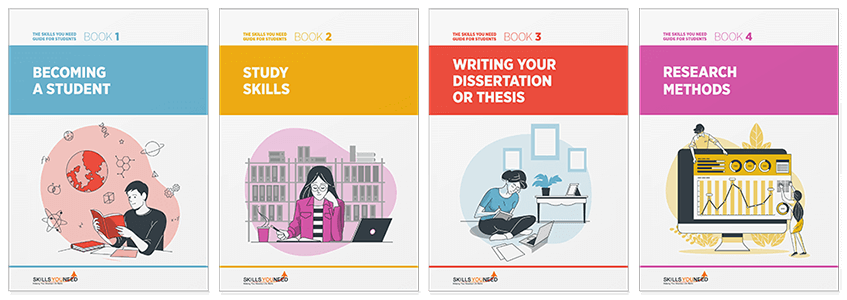
The Skills You Need Guide for Students

Develop the skills you need to make the most of your time as a student.
Our eBooks are ideal for students at all stages of education, school, college and university. They are full of easy-to-follow practical information that will help you to learn more effectively and get better grades.
Additional Information
When quoting you may sometimes want to leave out some words , in which case use … (three dots).
"Communication is … transferring information from one place to another"
If you need to add words to a quote for clarity, then square brackets are used:
“Communication is simply the act [in communication skills] of transferring information from one place to another.”
You can use [sic] to note an original error and/or foreign spelling , SkillsYouNeed is a UK site and therefore uses UK spellings:
"The color [sic] of the water..."
Continue to: Common Mistakes in Writing Sources of Information
See Also: Note-Taking for Reading What is Theory? | Writing an Essay | Punctuation
- Jump to menu
- Student Home
- Accept your offer
- How to enrol
- Student ID card
- Set up your IT
- Orientation Week
- Fees & payment
- Academic calendar
- Special consideration
- Transcripts
- The Nucleus: Student Hub
- Referencing
- Essay writing
- Learning abroad & exchange
- Professional development & UNSW Advantage
- Employability
- Financial assistance
- International students
- Equitable learning
- Postgraduate research
- Health Service
- Events & activities
- Emergencies
- Volunteering
- Clubs and societies
- Accommodation
- Health services
- Sport and gym
- Arc student organisation
- Security on campus
- Maps of campus
- Careers portal
- Change password
Reference Your Essay
Referencing is a system that allows you to acknowledge the contributions and work of others in your writing by citing your sources. A feature of academic writing is that it contains references to the words, information and ideas of others.
All academic essays MUST contain references. Referencing guards against plagiarism , a serious academic offence. Plagiarism is copying someone else's words or ideas and presenting them as your own.
Make sure you are familiar with the referencing style your faculty or school requires. Most have guides specifying the system they prefer. Often Schools/Faculties don't mind which system you use as long as it is consistent . If this is the case, use the system you are most comfortable with.
Reference lists
Remember to list all the books and articles you use for the essay in a Reference List. This is a list of all works cited in your essay and should be the final page.
Next step: Editing your essay
Essay and assignment writing guide.
- Getting started
- Research the topic
- Organise your ideas
- Write your essay
- Reference your essay
- Edit your essay
- Hand in your essay
- Essay and assignment planning
- Answering assignment questions
- Editing checklist
- Writing a critical review
- Annotated bibliography
- Reflective writing
- ^ More support
Study Hacks Workshops | All the hacks you need! 7 Feb – 10 Apr 2024

10 Referencing Skills
Reference any and all materials you have used within your written work that are from a published text, video, or recording.
A referencing style is a set of rules on how to acknowledge the thoughts, ideas and works of others in a particular way. Referencing is a crucial part of successful academic writing, avoiding plagiarism and maintaining academic integrity in your assignments and research [1] .
You will need the author’s name (all authors); the year of publication; the chapter or journal article title; the book or journal name; editors names if it is an edited text; in a journal you will need the volume number and issue number; page ranges are needed for book chapters and journal articles; the publisher is needed for a book; if it is an online book, a DOI in needed. See the link in the “HOW?” section below for specific details of how to reference different types of texts.
Primarily to avoid plagiarism , plus you should also give credit where credit is due. It demonstrates evidence of your research and reading of academic sources for your assessments and adds the weight of expert knowledge to your own arguments/points/claims. It is good academic practice and demonstrates academic integrity. It also allows readers of your work to seek information from your sources or complete further reading.
Whenever you are searching for academic articles or books for your assessment, always take notes of the required referencing information. An in-text citation must be included in your written work each time you use materials ( sources ) that are not your own. You must also provide an end-of-text reference list that corresponds with all citations used in-text. Only sources cited in-text should appear in the reference list and no other sources you may have examined though not included in the finished assessment.
The University of Queensland provides all relevant style guides. UQ College Academic English uses APA (7th edition). Each edition of a style has variances, so ensure you have asked your lecturers/tutors which specific style and edition you are required to use for your particular courses.
APA 7th style guide – library link
https://guides.library.uq.edu.au/referencing/apa7
What is a reference list?
All works that include the ideas, words and images of other authors need to include citations . The full reference for each brief citation must be listed on a new page at the end of the written work, with the heading – References (centered on the page).
The following information is included in the UQ Library style guide for APA (7th ed.) . Visit the style guide and access the full information via the “reference List” tab on the left-hand side of the screen.
- No specific font type or size required. Recommendations include Calibri size 11, Arial size 11, Lucida size 10, Times New Roman size 12, Georgia size 11 or Computer Modern size 10 (LaTeX). NOTE: It should align with the rest of the assignment.
- The reference list is double line-spaced .
- A reference list is arranged alphabetically by author last name .
- Each reference appears on a new line.
- Each item in the reference list is required to have a hanging indent from the second line onward .
Zarate, K., Maggin, D. M., & Passmore, A. (2019). Meta‐analysis of mindfulness training on teacher well‐being. Psychology in the Schools , 56(10), 1700–1715. https://doi.org/10.1002/pits.22308
- References should not be numbered.
- If a reference has no author, it is cited by title, and included in the alphabetical list using the first significant word of the title ( not A, An, or The).
- If you have more than one item with the same author, list the items chronologically, starting with the earliest publication date.
- If there is no date, the abbreviation n.d. may be used. It is extremely rare to not find a publication date; if it is a website, use the date the page was last updated, found at the very bottom of the page or home page.
- Use the full journal name , not the abbreviated name, and type it as it appears in the journal – use appropriate capitalization.
- Web addresses or DOI s can either be live links (blue and underlined) or as normal black text with no underline. If the work containing the reference list is to be made available online, use the live link format.
What is the difference between a reference list and a bibliography?
- A reference list only includes the sources (books, articles, and web pages, etc.) that are cited in the text of the document (essay, report).
- A bibliography includes all sources consulted, even if they are not cited in the document. This is more frequently used for research and PhD students.
Example Reference List (An extended list is available via the UQ Library style guide)
American Psychological Association. (2020). Journal article references. https://apastyle.apa.org/style-grammar-guidelines/references/examples/journal-article-references
American Psychological Association. (2020). Publication manual of the American Psychological Association : the official guide to APA style (7th ed.).
McAdoo, T. (2020, March 16). How to create an APA style reference for a canceled conference presentation . American Psychological Association. https://apastyle.apa.org/blog/canceled-conferences
Melbourne University Law Review Association & Melbourne Journal of International Law. (2010). Australian guide to legal citation . (3rd ed.). https://law.unimelb.edu.au/__data/assets/pdf_file/0007/1586203/FinalOnlinePDF-2012Reprint.pdf
Also see Chapter 14 – Integrating Sources and Academic Integrity
- https://guides.library.uq.edu.au/referencing ↵
the practice of taking someone else's work or ideas and passing them off as one's own
Digital Object Identifier
source material is where you use the information and ideas of others in your own academic writing - they can be text, speech, images, websites, videos.
The brief form of the reference that you include in the body of your work (essay, report). Follow the referencing style guide for exact details.
Contains details of all the sources cited in a text, usually presented in alphabetical order and found at the end of a work.
A brief reference to a source, embedded within a text. Refer to the referencing style guide for instructions.
Academic Writing Skills Copyright © 2021 by Patricia Williamson is licensed under a Creative Commons Attribution-NonCommercial-ShareAlike 4.0 International License , except where otherwise noted.
Share This Book
Purdue Online Writing Lab Purdue OWL® College of Liberal Arts
APA Formatting and Style Guide (7th Edition)

Welcome to the Purdue OWL
This page is brought to you by the OWL at Purdue University. When printing this page, you must include the entire legal notice.
Copyright ©1995-2018 by The Writing Lab & The OWL at Purdue and Purdue University. All rights reserved. This material may not be published, reproduced, broadcast, rewritten, or redistributed without permission. Use of this site constitutes acceptance of our terms and conditions of fair use.
In-Text Citations
Resources on using in-text citations in APA style
Reference List
Resources on writing an APA style reference list, including citation formats
Other APA Resources
- TutorHome |
- IntranetHome |
- Contact the OU Contact the OU Contact the OU |
- Accessibility Accessibility
- StudentHome
- Help Centre
You are here
Help and support.
- Referencing and plagiarism
Quick guide to Harvard referencing (Cite Them Right)
- Site Accessibility: Library Services

Print this page
There are different versions of the Harvard referencing style. This guide is a quick introduction to the commonly-used Cite Them Right version. You will find further guidance available through the OU Library on the Cite Them Right Database .
For help and support with referencing and the full Cite Them Right guide, have a look at the Library’s page on referencing and plagiarism . If you need guidance referencing OU module material you can check out which sections of Cite Them Right are recommended when referencing physical and online module material .
This guide does not apply to OU Law undergraduate students . If you are studying a module beginning with W1xx, W2xx or W3xx, you should refer to the Quick guide to Cite Them Right referencing for Law modules .
Table of contents
In-text citations and full references.
- Secondary referencing
- Page numbers
- Citing multiple sources published in the same year by the same author
Full reference examples
Referencing consists of two elements:
- in-text citations, which are inserted in the body of your text and are included in the word count. An in-text citation gives the author(s) and publication date of a source you are referring to. If the publication date is not given, the phrase 'no date' is used instead of a date. If using direct quotations or you refer to a specific section in the source you also need the page number/s if available, or paragraph number for web pages.
- full references, which are given in alphabetical order in reference list at the end of your work and are not included in the word count. Full references give full bibliographical information for all the sources you have referred to in the body of your text.
To see a reference list and intext citations check out this example assignment on Cite Them Right .
Difference between reference list and bibliography
a reference list only includes sources you have referred to in the body of your text
a bibliography includes sources you have referred to in the body of your text AND sources that were part of your background reading that you did not use in your assignment
Back to top
Examples of in-text citations
You need to include an in-text citation wherever you quote or paraphrase from a source. An in-text citation consists of the last name of the author(s), the year of publication, and a page number if relevant. There are a number of ways of incorporating in-text citations into your work - some examples are provided below. Alternatively you can see examples of setting out in-text citations in Cite Them Right .
Note: When referencing a chapter of an edited book, your in-text citation should give the author(s) of the chapter.
Online module materials
(Includes written online module activities, audio-visual material such as online tutorials, recordings or videos).
When referencing material from module websites, the date of publication is the year you started studying the module.
Surname, Initial. (Year of publication/presentation) 'Title of item'. Module code: Module title . Available at: URL of VLE (Accessed: date).
OR, if there is no named author:
The Open University (Year of publication/presentation) 'Title of item'. Module code: Module title . Available at: URL of VLE (Accessed: date).
Rietdorf, K. and Bootman, M. (2022) 'Topic 3: Rare diseases'. S290: Investigating human health and disease . Available at: https://learn2.open.ac.uk/mod/oucontent/view.php?id=1967195 (Accessed: 24 January 2023).
The Open University (2022) ‘3.1 The purposes of childhood and youth research’. EK313: Issues in research with children and young people . Available at: https://learn2.open.ac.uk/mod/oucontent/view.php?id=1949633§ion=1.3 (Accessed: 24 January 2023).
You can also use this template to reference videos and audio that are hosted on your module website:
The Open University (2022) ‘Video 2.7 An example of a Frith-Happé animation’. SK298: Brain, mind and mental health . Available at: https://learn2.open.ac.uk/mod/oucontent/view.php?id=2013014§ion=4.9.6 (Accessed: 22 November 2022).
The Open University (2022) ‘Audio 2 Interview with Richard Sorabji (Part 2)’. A113: Revolutions . Available at: https://learn2.open.ac.uk/mod/oucontent/view.php?id=1960941§ion=5.6 (Accessed: 22 November 2022).
Note: if a complete journal article has been uploaded to a module website, or if you have seen an article referred to on the website and then accessed the original version, reference the original journal article, and do not mention the module materials. If only an extract from an article is included in your module materials that you want to reference, you should use secondary referencing, with the module materials as the 'cited in' source, as described above.
Surname, Initial. (Year of publication) 'Title of message', Title of discussion board , in Module code: Module title . Available at: URL of VLE (Accessed: date).
Fitzpatrick, M. (2022) ‘A215 - presentation of TMAs', Tutor group discussion & Workbook activities , in A215: Creative writing . Available at: https://learn2.open.ac.uk/mod/forumng/discuss.php?d=4209566 (Accessed: 24 January 2022).
Note: When an ebook looks like a printed book, with publication details and pagination, reference as a printed book.
Surname, Initial. (Year of publication) Title . Edition if later than first. Place of publication: publisher. Series and volume number if relevant.
For ebooks that do not contain print publication details
Surname, Initial. (Year of publication) Title of book . Available at: DOI or URL (Accessed: date).
Example with one author:
Bell, J. (2014) Doing your research project . Maidenhead: Open University Press.
Adams, D. (1979) The hitchhiker's guide to the galaxy . Available at: http://www.amazon.co.uk/kindle-ebooks (Accessed: 23 June 2021).
Example with two or three authors:
Goddard, J. and Barrett, S. (2015) The health needs of young people leaving care . Norwich: University of East Anglia, School of Social Work and Psychosocial Studies.
Example with four or more authors:
Young, H.D. et al. (2015) Sears and Zemansky's university physics . San Francisco, CA: Addison-Wesley.
Note: You can choose one or other method to reference four or more authors (unless your School requires you to name all authors in your reference list) and your approach should be consistent.
Note: Books that have an editor, or editors, where each chapter is written by a different author or authors.
Surname of chapter author, Initial. (Year of publication) 'Title of chapter or section', in Initial. Surname of book editor (ed.) Title of book . Place of publication: publisher, Page reference.
Franklin, A.W. (2012) 'Management of the problem', in S.M. Smith (ed.) The maltreatment of children . Lancaster: MTP, pp. 83–95.
Surname, Initial. (Year of publication) 'Title of article', Title of Journal , volume number (issue number), page reference.
If accessed online:
Surname, Initial. (Year of publication) 'Title of article', Title of Journal , volume number (issue number), page reference. Available at: DOI or URL (if required) (Accessed: date).
Shirazi, T. (2010) 'Successful teaching placements in secondary schools: achieving QTS practical handbooks', European Journal of Teacher Education , 33(3), pp. 323–326.
Shirazi, T. (2010) 'Successful teaching placements in secondary schools: achieving QTS practical handbooks', European Journal of Teacher Education , 33(3), pp. 323–326. Available at: https://libezproxy.open.ac.uk/login?url=https://search.ebscohost.com/log... (Accessed: 27 January 2023).
Barke, M. and Mowl, G. (2016) 'Málaga – a failed resort of the early twentieth century?', Journal of Tourism History , 2(3), pp. 187–212. Available at: https://doi.org/10.1080/1755182X.2010.523145
Surname, Initial. (Year of publication) 'Title of article', Title of Newspaper , Day and month, Page reference.
Surname, Initial. (Year of publication) 'Title of article', Title of Newspaper , Day and month, Page reference if available. Available at: URL (Accessed: date).
Mansell, W. and Bloom, A. (2012) ‘£10,000 carrot to tempt physics experts’, The Guardian , 20 June, p. 5.
Roberts, D. and Ackerman, S. (2013) 'US draft resolution allows Obama 90 days for military action against Syria', The Guardian , 4 September. Available at: http://www.theguardian.com/world/2013/sep/04/syria-strikes-draft-resolut... (Accessed: 9 September 2015).
Surname, Initial. (Year that the site was published/last updated) Title of web page . Available at: URL (Accessed: date).
Organisation (Year that the page was last updated) Title of web page . Available at: URL (Accessed: date).
Robinson, J. (2007) Social variation across the UK . Available at: https://www.bl.uk/british-accents-and-dialects/articles/social-variation... (Accessed: 21 November 2021).
The British Psychological Society (2018) Code of Ethics and Conduct . Available at: https://www.bps.org.uk/news-and-policy/bps-code-ethics-and-conduct (Accessed: 22 March 2019).
Note: Cite Them Right Online offers guidance for referencing webpages that do not include authors' names and dates. However, be extra vigilant about the suitability of such webpages.
Surname, Initial. (Year) Title of photograph . Available at: URL (Accessed: date).
Kitton, J. (2013) Golden sunset . Available at: https://www.jameskittophotography.co.uk/photo_8692150.html (Accessed: 21 November 2021).
stanitsa_dance (2021) Cossack dance ensemble . Available at: https://www.instagram.com/p/COI_slphWJ_/ (Accessed: 13 June 2023).
Note: If no title can be found then replace it with a short description.
- Frequently Asked Questions
- Getting started with the online library
- Disabled user support
- Finding resources for your assignment
- Finding ejournals and articles
- Access eresources using Google Scholar
- Help with online resources
- Finding and using books and theses
- Finding information on your research topic
- Canllaw Cyflym i Gyfeirnodi Harvard (Cite Them Right)
- Quick guide to Cite Them Right referencing for Law modules
- The Classical Studies guide to referencing
- Bibliographic management
- What if I cannot find the reference type I need in my referencing guide?
- I have found a web page with no author, date or publisher - how do I reference it?
- Training and skills
- Study materials
- Using other libraries and SCONUL Access
- Borrowing at the Walton Hall Library
- OU Glossary
- Contacting the helpdesk
Smarter searching with library databases
Thursday, 9 May, 2024 - 20:30
Learn how to access library databases, take advantage of the functionality they offer, and devise a proper search technique.

Library Helpdesk
Chat to a Librarian - Available 24/7
Other ways to contact the Library Helpdesk
The Open University
- Study with us
- Supported distance learning
- Funding your studies
- International students
- Global reputation
- Apprenticeships
- Develop your workforce
- News & media
- Contact the OU
Undergraduate
- Arts and Humanities
- Art History
- Business and Management
- Combined Studies
- Computing and IT
- Counselling
- Creative Writing
- Criminology
- Early Years
- Electronic Engineering
- Engineering
- Environment
- Film and Media
- Health and Social Care
- Health and Wellbeing
- Health Sciences
- International Studies
- Mathematics
- Mental Health
- Nursing and Healthcare
- Religious Studies
- Social Sciences
- Social Work
- Software Engineering
- Sport and Fitness
Postgraduate
- Postgraduate study
- Research degrees
- Masters in Art History (MA)
- Masters in Computing (MSc)
- Masters in Creative Writing (MA)
- Masters degree in Education
- Masters in Engineering (MSc)
- Masters in English Literature (MA)
- Masters in History (MA)
- Master of Laws (LLM)
- Masters in Mathematics (MSc)
- Masters in Psychology (MSc)
- A to Z of Masters degrees
- Accessibility statement
- Conditions of use
- Privacy policy
- Cookie policy
- Manage cookie preferences
- Modern slavery act (pdf 149kb)
Follow us on Social media
- Student Policies and Regulations
- Student Charter
- System Status
- Contact the OU Contact the OU
- Modern Slavery Act (pdf 149kb)
© . . .
Writing Better University Essays/Referencing
By referencing the sources you use in your essay, you do a number of things. First of all, you comply with an academic convention. Secondly, you make your essay look more professional. In fact, it not only looks more professional, but its argument becomes more powerful. Thirdly, you allow others to check your sources. This is often only a hypothetical issue, but a look through the list of your references will allow others to judge your argument quickly. Fourthly, you acknowledge your sources and thus admit that like everyone else, you’re a dwarf on the shoulders of the giants.
The essential bits of referencing require you to provide enough information to others so that they can identify the source. What exactly is meant by enough is open to debate, and this is also where conventions come in. Essential is that you do provide references. Ideally, you would do so properly. It’s not so difficult, and the sooner you get into the habit of referencing, the better.
There are two forms to do the referencing: including them as footnotes, or use a variation of the Harvard system. Your institution may have a preference, or even a house style. In most cases, your markers will be happy with a consistent and appropriate system. The Harvard system is also known as author/date, and will be described here in more detail.
- 1 Inside the Text
- 2 At the End
- 3 Problem Cases
- 4 Plagiarism
- 5 Citations and Quotations
- 6 When to Put the References
Inside the Text [ edit | edit source ]
Within your essay, whenever you make a statement that is essentially based on somebody else’s work, you should attribute the source. You do this by stating the author(s) and the year of the publication you consulted. Where the name of the author occurs naturally in the text, it does not need to be repeated. The references are usually included at the end of a sentence, or where inappropriate in a place where the text flow is not interrupted too much, such as in front of a comma. This may be necessary, for example, if only the first half of your sentence is based on someone else’s work.
The name of the author is included in brackets, together with the year of publication. Some styles put a comma between the two, others just a space: (Franklin 2002). Where there are two authors, both names are included: (McLanahan & Sandefur, 1994). Some styles prefer the word and , others prefer the ampersand (& symbol). Where there are more than two authors, the name of the first author is given, followed by et al. (which literally means and others ): (Almeder et al. , 2001). Some styles put et al. into italics, others don’t.
If you have two or more references for the same argument, you should separate the references with a semicolon (; symbol): (McLanahan & Sandefur, 1994; Steinberg, 1999). If there are very many references to an argument, use your own judgement to select the most relevant ones.
What should you reference? Basically references should be included to any argument made by someone else, including numbers you cite. However, statements of general nature need not be attributed to anyone. A statement that the sky is blue alone does not require a reference. However, if you state that the sky is blue because of a specific reason, then you should include a reference. If you use the exact words of an author (quotation), you’ll need to give the number of the page where you copy from. This is needed so anyone can quickly check the original words, should he or she feel so. See the separate section on quotes.
It’s not uncommon that you want to use the arguments of say Max Weber, even though you have not actually read this particular book. Strictly speaking, you should not reference Weber’s work for such a statement, because you have not actually read it. Can you really be sure this is what Weber said or meant? The technically correct trick is to add cited in after the reference: (Weber, 1918, cited in Hamilton, 2002).
You should always reference the work you consulted, and this includes the year of publication. Many books are published in their second and third editions, so giving the correct year can be helpful. Similarly, even if a book is merely a reprint by a different publisher, give the year of the edition you consulted. The page numbers may differ. If it’s just a second print of the exact same book, use the original date. Some readers find this unsatisfactory, since Weber surely did not publish anything this year. The convention to circumvent this issue is to give both years: the year of the original publication, together with the one of the work you consulted. Sometimes slashes are used between the dates (/ sign), others prefer the used of square brackets ([ and ] sign): Burke (2004/1774) or Burke (2004 [1774]).
Another small issue occurs where an author published more than one book or article in a single year, and you want to cite more than one of them. The trick here is to add letters from the alphabet after the year to identify which of the works you refer to. Use the letter a for the first of your references, the letter b for the second and so on: (McManus, 1994a) and (McManus, 1994b) are two different works.
To sum it up, inside the text, you give the family name of the author, followed by the year of the publication. Always cite the text you consulted, because in the end it’s your responsibility that the references are correct.
At the End [ edit | edit source ]
At the end of your essay you should include a list of references. Such a list of references provides more details than just the name of the author and the year of publication. It’s this list that allows identifying the work cited. Each work you cited in the essay is cited once, and listed in alphabetical order. Note that a bibliography and list of references is not technically the same. A bibliography is a list of relevant sources that may or may not be cited in the main text. References are the sources you cited, even if they are rather trivial. Use the heading references for your references.
For books, you put the family name of the author(s) and their initials, followed by the year of publication in brackets, the title in italics, the place of publication, and finally the name of the publisher. If there are editors, give their names instead of the authors’. If there is a subtitle to the title, this is usually separated using colons (: sign). Where there are more than four authors, it’s common to use et al. after the first three, but some styles insist on citing all authors. Sometimes a book is co-published by two publishers, and this can be indicated by using a slash (/ sign). Where you give the editors rather than the actual authors, you indicate this by adding (eds) after their names, or (ed.) if there is only one. The title is capitalized. For example:
Chapters in a book are cited separately, especially if the book is edited. You give the family name of the author and his or her initial, the year, the name of the chapter in single speech marks (‘ and ’ sign; not capitalized), followed by the word in , and the name and year of the editor(s). If you cite only one chapter, you can give the whole reference at the end; otherwise it’s enough to give the name and year of the editor. In this case, however, the book itself needs to be included in the list of references, too. For example:
An entry in a printed encyclopaedia or a dictionary can be cited if it was a chapter in a book. The editors are often given on the front of the reference book. For example:
Journal articles are cited in a way that is quite similar to chapters in a book. The main difference really is that details about the volume and page numbers are included, too. The reference starts with the name and initial of the author, the year in brackets, the title of the article in single speech marks (not capitalized), followed by the name of the journal in italics (capitalized), and further details. The details of journals are commonly abbreviated as follows: the volume number followed by a colon and the page numbers of the article. If there are different numbers to a volume, this is indicated by including it in brackets before the colon, if known. Online journals may not have page numbers. For example:
Pages on the internet should be cited where used. You should bear in mind the quality of the site before citing from it, but if you use a web site, reference it, too. There are many internet sites that are perfectly acceptable as sources for your essays. The reference includes the name of the author and initial, the year in brackets, the title of the document in italics, the word online in square brackets, the place of publication, the publisher, the words available from : followed by the URL, and the date when the document was accessed in brackets. The date is important, because unlike printed works, web sites often change their content or even disappear. Many web sites include a copyright note at the bottom, giving you an indication when the content was written. For example:
Newspaper articles are very similar to journal articles in the way they are cited. The key difference is that rather than the volume, the date is given. The reference therefore includes the name and initial of the author, the year of publication in brackets, the title in single speech marks, the name of the newspaper in italics (capitalized), the date, and finally the page where the article was found. For one page it’s customary to use the abbreviation p. , for articles running over two or more pages, the abbreviation pp. is common. For example:
Handouts from a lecture can be referenced and should be referenced if they are used as the basis of what you write. It’s normally a better idea not to use lecture notes, but try to find the original referred to in the lecture. Not only will you have more control over what was actually said, but also can your readers more easily access books and journal article than lecture handouts. The reference to a lecture handout includes the name and initial of the lecturer, the year in bracket, the title of the handout in single speech marks, the words lecture notes distributed in followed by the name of the course in italics, the word at and the name of your institution, the place, and date of the lecture. For example:
Personal conversations are not commonly considered good sources, but if they are what you use as the basis of your essay, you should include such conversations. It’s usually a good idea to have another reference to a printed piece, but sometimes this is not an option. In terms of giving the reference, personal conversations are very easy: the name of the person you spoke to, the year in brackets, the words conversation with the author and the date of the conversation. For example:
The same format can also be used for personal e-mail, or instant messengers. Once again, bear in mind the credibility of your sources. With e-mail messages it’s customary to include the e-mail address of the sender in brackets after the name, but it’s essential that you obtain consent from the author. The subject line of the e-mail is often included as the title. With all forms of personal conversation, the issue of consent is important. It’s always a very good idea to check with the author first.
Problem Cases [ edit | edit source ]
There are sometimes cases that are not so straightforward as the average book or journal article. For everything there is a solution in the academic conventions. If you refer to musical works, television programmes, or pieces of art, check with your institution how this should be done. If everything else fails, remember the function of referencing, and provide a reasonable amount of information for others to chase the work. Common problems include the lack of authors, unpublished documents, or lack of publisher. Where there is no author, often there is an organization. Put the name of the organization. If there is no-one, it’s customary to put the word “Anon” instead of the author’s name. For example:
Sometimes the year of a document is not known. Where you have a rough idea, you can put a c before the date, such as in (c.1999). Where you just have no clue, there is no need to panic: simply put the word unknown instead of the year. Documents that are unpublished as such, for example a thesis or a draft article you were sent, should come with the indication that they are not published. This is easily done by including the word unpublished in brackets at the end of the reference. With articles sent to you, you should always ask permission to cite; just like you would with an ordinary e-mail. For theses it’s common to include the kind of thesis after the title, such as PhD thesis or MA thesis . Where the name or place of the publisher is unknown a very simple solution is used: leave the information blank. This is particularly an issue with internet sites. Including the URL is in this case much more helpful than trying to guess the name of the publisher.
Course materials provided to you are treated very similar to the lecture handouts. Give the name of the author, the year in brackets, the course code if there is one, the course title in italics (capitalized), the kind of material and its title in single speech marks, place of publication, and publisher. For example:
The capitalization of titles may seem a bit confusing, but it follows a simple logic: it’s the main title that is capitalized. In the case of a book, the main title is that of the book. In the case of journal articles, on the other hand, the main title is thought to be that of the journal itself. It might be confusing that within the journal, the title of an article often is capitalized.
Capitalization is not very hard to achieve. Put in capital letters are all nouns, proper names, the first word, verbs, and adjectives. This is in fact almost everything. Not put in capital letters are words like and , in , or , or with . Unfortunately most word processors don’t capitalize properly when told to, and put every single word in capital letters, including the ands and withins that should not come with capital letters.
Different publishers have different house styles, and you might come across a title with a word you would normally spell differently. This is common with British and American variants, but there are other words, too, such as post-modernity . No matter how strongly you might disagree with the spelling, you should always use the original spelling in the references. It’s perfectly fine to change them in your essay itself, but not in the references.
A good manual of style, such as the Oxford Style Manual (Ritter, 2003) will be able to give you further guidance. Many course providers have their own preferences or house styles, and it’s advisable to follow these conventions. Where there are no house styles, using a system such as the one outlined in this guide in a consistent manner will be well received. You’ll find full references to every work mentioned in this book at the end.
Plagiarism [ edit | edit source ]
It’s difficult to write about referencing without mentioning plagiarism. Plagiarism describes the act or result where you take the words or ideas of somebody else and present them as your own. Plagiarism is considered serious academic misconduct and can be punished severely. Most importantly, however, your reputation is on the line.
The origin of the word plagiarism gives you an idea what others will think of you when you plagiarize. The word goes back to the Latin plagiārius , a thief and kidnapper—in particular a child snatcher and somebody abducting slaves. The modern use in academia brands you a literary thief (OED, 2005).
There are a number of reasons why plagiarism occurs. The worst case is deliberate plagiarism (for whatever reason). Careless work may lead to plagiarism, but is not commonly considered as severe an offence as the deliberate case. Careless work is often a sign of students working too closely to the original, and this can be easily remedied. Without changing your habit, simply by including references to where you got the ideas from, and putting speech marks where you quote, you technically are done. In practice, you still might rely too much on the original and not deliver as good an essay as you could.
Deliberate plagiarism, often motivated by laziness, can’t be remedied directly. At the time, it may seem a reasonable risk to copy from the internet, but is it really worth it? Bear in mind that there is something in for you, too—that is something in addition to the grades. The more you write, the easier it gets.
If you work too closely to the original, there is a simple solution: don’t write the essay with the books in front of you. By so doing, there is very little danger that you copy word by word. In a way, you force yourself to make the material your own: and that is a good thing—it makes a better argument, your essay will be more original, and not least, you’ll also get better grades. Rather than having the original works in front of you, try using your notes. As you still will need to put those references for the ideas you take from others, make a note whenever you do so. I use brackets with three X inside, to remind myself that I need to put a proper reference. Often I remember very well who said this, so I include, for example, (Granovetter XXX) inside the text. When checking the essay, it’s hard not to notice the triple X; and there is always the search facility in the word processor. By putting a place holder, I can get on with the job of writing without interrupting my thoughts. Equally important, I leave some traces indicating to myself that there is some more work to be done: finding the proper reference, for example.
If you think plagiarism is hard to detect by your marker, think again. There are a great number of signs that give plagiarized work away. Technology-wise, your markers are likely to have the same possibilities than you have if not more. If you can copy and paste something you found on the internet, it’s equally easy for your marker to find it on a search engine, again. It would, of course, be possible, to change plagiarized work to the extent that the deed is no longer easy to spot. Usually, however, this is just as much work as writing the essay yourself.
Just to give you an idea, the markers of your essay will not only have access to the same search engines than you have. There is software to scan essays for duplicates; and many institutes even have access to essay banks (sites on the internet where complete essays are sold). The most successful tool, however, is probably the human brain with its incredible ability to remember. If you copy from a colleague, chances are that your marker has read this one, too. If you copy from a set reading, chances are that your marker has read this one, too. Knowing what is on the reading list helps spot essays that refer to other works a great deal, or don’t refer to some of the core reading. Your marker can estimate how many readings you had time to read, or whether you’re likely to have read a great number of papers on the Belgian perspective of whatever issues is set in the question. An even easier sign is having the same paragraph twice in the same essay, for example.
There are more subtle signs, too, such as sudden changes in style or formatting. Many people are unaware of how idiosyncratic one’s writing style is. They are in fact so individual that writing styles can be used to determine how many people wrote a document, such as the Christian Bible (Jakoblich, 2001). Writing style includes the tenses we use, the level of formality, our own choice of words, the kinds of metaphors we put, whether we use American or British English, choices over punctuation, the length of sentences, or the use of specialist terms. Typographic signs include font size, choices of where to break paragraphs, spaces in between lines, and things like proper m- and n-dashes (when copying from electronic articles).
The presence or lack of references is often an easy sign: for example, where there are many references inside the text, but few at the end, or where the citation style changes within a single essay. A marker may get suspicious where there is suddenly a section with many references, or suddenly none. Sometimes, students even include hyperlinks in references when copying from electronic journals; and have them automatically underlined by the word processor.
Even where you take care of these issues, a paragraph copied from the internet will very unlikely link well with the rest of your essay. The style may be inappropriate, or just different. Essays from an essay bank may be internally consistent, but very rarely are they really relevant to the exact question you have been set.
In summary, you can avoid plagiarism easily. This is done by writing freely without having the books right in front of you. Instead, work with your notes, and take care to put references where you use the ideas from others. Don’t use the internet to copy from, no matter how tempting it is. It will hardly ever be worth it.
Citations and Quotations [ edit | edit source ]
There is an important difference between citations and quotations. Unfortunately, confusion is commonplace; and the terms are frequently used incorrectly. Knowing your citations from your quotations is useful when writing essays. It’s essential, in fact, if you want to reference properly.
Citations are about ideas you take from others. Quotations are about the exact words used by others. This is really the whole distinction. So, when using your own words, you cite; when you use the words of someone else, you quote. “Why can’t a man be more like a woman?” (Blankenhorn, 1995, p.117) is a quotation, because I use the exact same words Blankenhorn did. However, when stating that families in the US are increasingly defined by the absence of a father (Blankenhorn, 1995), I only use the idea, not the exact words.
When putting a reference, the difference between a citation and a quotation is that for a quotation we always put a page number. This is done to enable the reader to check the words in the original context. In the list of references at the end of the text, there is no difference.
Short quotations are included in the text, and enclosed by speech marks. Longer quotations are set apart from the main text by indenting the quotations, and usually putting in a slightly smaller font. Longer means about 3 to 4 lines or more. For example:
When quoting someone else, you should take great care to copy the words exactly. Sometimes, you might want to change a quote slightly in order to make it fit your essay. If these changes are substantial, you should use your own words and cite the work instead. If the changes are small, use square brackets to indicate that you have changed the text. For example, you might quote Rawls (1999, p.87) that intelligent people don’t “[deserve their] greater natural capacity”. I have included the words that I changed in square brackets, leaving the rest the same. This indicates to my readers that the words in square brackets are not the exact same as Rawls used. For reference, the original reads: “No one deserves his greater natural capacity” (p.87). I made the changes, because I wrote about intelligent people, and Rawls was talking in more general terms.
Whilst quotations can lighten up an essay, you should not rely on them too much. Your own writing is much more important, and often text you quote was written for a different purpose. The consequence is that the quotations may be relevant in content (what is being said), but in terms of style don’t fit well with what you wrote. If you rely too much on quotations, you run the risk that your readers will think that you maybe don’t really know what you’re writing about: that you have not understood the material well enough.
When to Put the References [ edit | edit source ]
When writing an essay, particularly when writing an extended essay, it’s easiest to put the references whilst you write. This is the case, because you still know where you got the idea from. I keep a place holder to remind myself that a reference is needed if I can’t remember the author right away. Often, I will know at least some of it, and write this down. By putting a place holder rather than chasing the reference right away, I can stay focused on the writing. However, I also indicate that the essay is not completed. Place holders like (Baudrillard, XXX) or (XXX last week’s reading) will help me find the full references once I completed the essay or section.
References are needed whenever you write an academic piece of writing. Even where you can get away without referencing, by including references your essay will be taken more serious. It’s a good habit to put references all the time, so when you really need to—such as in your thesis—you’ll not struggle, or spend days trying to find out how to reference a chapter in a book.
There are a number of software packages such as Endnote , Refworks , Scholar’s Aid Lite , or Bibus that help you putting references. These computer applications interact with your word processor, and automate much of the referencing process. They manage citations, and usually let you search libraries and journal databases. Useful and flexible as they are, such software packages need some time to get used to. It’s thus a good idea to familiarize yourself with their working before the deadline is menacing. For example, make sure you know how to put page numbers for quotations.
Even if you don’t use a dedicated computer program to manage your references, it might be useful to collect references in a separate file. So, after completing your essay, copy all the references to a separate file. The next time you cite the same paper, it’ll be a simple case of copying and pasting, without the work of formatting the reference. Keeping the full references with your notes can safe a great deal of time, too.
Next: Exam essays
- Book:Writing Better University Essays
Navigation menu
Skip to Content
Massey University
- Search OWLL
- Handouts (Printable)
- Pre-reading Service
- StudyUp Recordings
- StudyUp Postgraduate
- Academic writing
- Intro to academic writing
- What is academic writing?
- Writing objectively
- Writing concisely
- 1st vs. 3rd person
- Inclusive language
- Te Reo Māori
- Assignment planning
- Assignment planning calculator
- Interpreting the assignment question
- Command words
- Organising points
- Researching
- Identifying academic sources
- Evaluating source quality
- Editing & proofreading
- Apostrophes
- Other punctuation
- Active voice
- American vs. British spelling
- Conditionals
- Prepositions
- Pronoun Reference
- Sentence fragments
- Sentence Structure
- Subject-verb agreement
- Formatting and layout
- Word limits and assignment length
- Commonly confused words
- How assignments are marked
- Marking guides
- Getting an A
- Levels of assessment
- Using feedback
- Professional emails
- Forum posts
- Forum netiquette guidelines
- Sharing personal information
- Writing about personal experiences
- Assignment types
- What is an essay?
- Essay planning and structure
- Introduction
- Thesis statement
- Body paragraphs
- Essay revision
- Essay writing resources
- What is a report?
- Report structure
- Analysing issues for a report
- Business report
- What is a business report?
- Business report structure
- Inductive vs. deductive reports
- Other kinds of business communication
- Business report format and layout
- What is a lab report?
- Lab report structure
- Science lab report writing resources
- Psychology lab report writing resources
- Lab report body paragraphs
- Literature review
- What is a literature review?
- Writing a literature review
- Literature review structure
- Literature review writing resources
- Research proposal
- Writing a research proposal
- Research proposal structure
- Other types
- Article critique
- Book review
- Annotated bibliography
- Reflective writing
- Oral presentation
- Thesis / dissertation
- Article / conference paper
- Shorter responses
- Computer skills
- Microsoft Word
- Basic formatting
- Images, tables, & figures
- Long documents
- Microsoft Excel
- Basic spreadsheets
- Navigating & printing spreadsheets
- Charts / graphs & formulas
- Microsoft PowerPoint
- Basic skills
- Advanced skills
- Distance study
- Getting started
- How to study
- Online study techniques
- Distance support
- Reading & writing
- Reading strategies
- Writing strategies
- Grammar resources
- Listening & speaking
- Listening strategies
- Speaking strategies
- Maths & statistics
- Trigonometry
- Finance formulas
- Postgraduate study
- Intro to postgrad study
- Planning postgrad study
- Postgrad resources
- Postgrad assignment types
- Referencing
- Intro to referencing
What is referencing?
- Why reference?
- Common knowledge
Referencing styles
- What type of source is this?
- Reference list vs. bibliography
- Referencing software
- Quoting & paraphrasing
- Paraphrasing & summarising
- Paraphrasing techniques
- APA Interactive
- In-text citation
- Reference list
- Online material
- Other material
- Headings in APA
- Tables and Figures
- Referencing elements
- 5th vs. 6th edition
- 6th vs. 7th edition
- Chicago style
- Chicago Interactive
- About notes system
- Notes referencing elements
- Quoting and paraphrasing
- Author-date system
- MLA Interactive
- Abbreviations
- List of works cited
- Captions for images
- 8th vs 9th edition
- Oxford style
- Other styles
- Harvard style
- Vancouver style
- Legal citations
- Visual material
- Sample assignments
- Sample essay 1
- Sample essay 2
- Sample annotated bibliography
- Sample book review
- Study skills
- Time management
- Intro to time management
- Procrastination & perfectionism
- Goals & motivation
- Time management for internal students
- Time management for distance students
- Memory skills
- Principles of good memory
- Memory strategies
- Note-taking
- Note-taking methods
- Note-taking in lectures
- Note-taking while reading
- Digital note-taking
- Reading styles
- In-depth reading
- Reading comprehension
- Reading academic material
- Reading a journal article
- Reading an academic book
- Critical thinking
- What is critical thinking?
- Constructing an argument
- Critical reading
- Logical fallacies
- Tests & exams
- Exam & test study
- Planning exam study
- Gathering & sorting information
- Reviewing past exams
- Phases of revision
- Last-minute study strategies
- Question types
- Short answer
- Multi-choice
- Problem / computational
- Case-study / scenario
- Open book exam
- Open web exam or test
- Take home test
- In the exam
- Online exam
- Physical exam
Academic writing relies on more than just the ideas and experience of one author. It also uses the ideas and research of other sources: books, journal articles, websites, and so forth. These other sources may be used to support the author's ideas, or the author may be discussing, analysing, or critiquing other sources.
Referencing is used to tell the reader where ideas from other sources have been used in an assignment. There are many reasons why it is important to reference sources correctly:
- It shows the reader that you can find and use sources to create a solid argument
- It properly credits the originators of ideas, theories, and research findings
- It shows the reader how your argument relates to the big picture
(For a detailed discussion, see why reference? )
Failure to properly acknowledge sources is called plagiarism , and it can carry significant academic penalties. Fortunately, plagiarism is easy to avoid by following a few basic principles.
What needs to be referenced?
Whenever an assignment uses words, facts, ideas, theories, or interpretations from other sources, those sources must be referenced. Referencing is needed when:
- You have copied words from a book, article, or other source exactly ( quotation )
- You have used an idea or fact from an outside source, even if you haven't used their exact wording ( paraphrasing and summarising )
The only exception to this is when the information is common knowledge , which is something that anyone is likely to know. If you are uncertain whether to reference something or not, it is better to reference it.
Citations and references
There are two elements used in referencing:
- A citation in the text of the assignment (also known as in-text citations)
- An entry in a reference list at the end of the assignment
The citation contains only enough information for the reader to find the source in the reference list. Usually, this is the name of the source's author and the year the source was published. For example:
When testing the usability of a website, it is necessary to gather demographic information about the users (Lazar, 2006).
In this example, (Lazar, 2006) tells the reader that this information has come from a source written by Lazar, which was published in 2006. This is a signpost, pointing the reader to the reference list.
The reference list is a list of all the sources used (and cited) in an assignment. It is alphabetised according to the names of the authors. Each entry in the reference list contains detailed information about one source. This usually includes the author's name, the year of publication, the title of the source, and source location details (e.g., publisher’s name, URL). For example:
Durie, M. (2003). Ngā kāhui pou: Launching Māori futures . Huia.
Hazledine, T., & Quiggan, J. (2006). Public policy in Australia and New Zealand: The new global context. Australian Journal of Political Science, 41 (2), 131–143.
Lazar, J. (2006). Web usability: A user-centered design approach . Pearson Addison Wesley.
Ministry for Primary Industries. (2012). Food safety . https://www.mpi.govt.nz/food-safety
If they wanted to, a reader could use this information to find these sources in a library or online.
Referencing is a formal system: there are rules and standards to follow when formatting citations and references. Many students find referencing quite intimidating at first. Like any skill, it takes time and patience to learn.
The examples above use APA style , a format created by the American Psychological Association. It is the most common referencing style used at Massey University.
Other styles include MLA style , Oxford style , Harvard style , and Chicago style . These styles are subtly different, and different colleges and departments may ask you to use different styles. Oxford style, for example, uses footnotes instead of in-text citations, and a bibliography instead of a reference list .
For more about the different referencing styles used at Massey University, see referencing styles .
Have a study or assignment writing question? Ask an expert at Academic Q+A forum
Get feedback on your draft assignment at Academic Writing and Learning Support
Need help with your assignment or referencing? Contact a consultant and receive online and/or face-to-face support
Page authorised by Director - Centre for Learner Success Last updated on 26 February, 2020
- Academic Q+A
Have a study or assignment writing question? Ask an expert at Academic Q+A
Live online workshops
- StudyUp (undergraduate)
- Campus workshops
- Albany (undergraduate)
- Albany (postgraduate)
- Albany (distance)
- Manawatu (undergraduate)
- Manawatu (postgraduate)
Upcoming events
- All upcoming events
- Academic writing and learning support
- 0800 MASSEY | (+64 6 350 5701)
- [email protected]
- Online form
- Skip to main content
- All Articles
- Study abroad info Articles
- Study abroad info Applying to university
- Choosing where to study
- Choosing a subject
- Financing your studies
- Getting your visa
- Before you leave
- Housing & accommodation
- Once you arrive
- Post-study life
How to reference in an academic essay
Writing a good academic essay which includes quotes and references is a vital writing skill to have at university. We give you useful vocabulary to help you understand what referencing is, why it’s important and how to use it.

When you start studying abroad at university you will have to write several essays for each of your modules. An important part of essay writing is referencing. It's critical to learn what it is, why you must use it and how to use it. Read on to find the answers to these questions. Before going into more detail, let’s first look at some useful vocabulary to help you a little later on.

Useful vocabulary
bibliography – This is like a reference list as it includes a list of all the sources (see below) you have cited (see below) in your essay, plus any sources you used in your research on the topic. You may not have cited the sources in your essay, but you used them in your research.
citation (noun) – This is a quotation from, or a reference to, a book, journals, and so on. (verb: to cite)
in-text citation/referencing – This is a reference to a book or journal in the actual text of the essay. This is different from a reference list or bibliography.
date of publication – This is the date the source you have used was published (made available either in printed format or online).
reference - (verb and noun) This is where you acknowledge or recognise the importance of the sources you have used in the writing of your essay. There are many ways to reference the sources used (more on this later).
reference list – This is a detailed list of the sources (see definition below) you have cited in your essay. The reference list is added at the end of your essay and is listed in alphabetical order.
source – (noun) These are the materials you have used to gather information, data, facts, and statistics. Sources must be credible (they can be trusted and have authority). They can be journals, academic books, conference papers, and from credible and trustworthy websites such as .gov / .edu / .ac.
Why do I have to use references in my essay?
It is important to acknowledge what sources you have used in the writing of your essay to show that you have done a great deal of reading on the subject and provide you with evidence to support your point of view.
Equally importantly, referencing makes clear which ideas and words are your own and which ideas and/or words have been taken from someone else. When you use other people’s words without acknowledging the source this is called plagiarism.
Plagiarism is a form of copying that has very strong negative consequences such as failing your course, lower grades and even being expelled from university. Each university and each faculty have their own rules of what constitutes plagiarism, and there are software tools that professors can use to see if a student has copied the work and words of another person.
The best way to avoid plagiarism while note-taking and writing is to improve your essay writing skills and learn how to paraphrase and reference correctly.
How do I write a reference correctly?
This question is a little more difficult to answer as different referencing systems are better suited to certain subjects than to others. Each course will state what referencing system they require students to use.
Here are some referencing systems that are used by universities in the US , Canada , Australia , New Zealand , Ireland and the UK :
- APA – American Psychological Association – this style is commonly used in psychology, health and social sciences and medicine.
- Chicago – this style is mainly used in humanities subjects.
- Harvard – this style has been adapted and used by many universities, faculties, and course programmes. It’s important to check your course programme and follow it carefully.
There are many more, but we’ve listed some of the most common systems. Here is what these styles look like in-text and in a reference list/bibliography:
Your university will have detailed style guides for you to follow. International students also have a great deal of help on offer at university from the language support services and study skills tutorials and resources online.
The good news is that learning how to use referencing and citations correctly isn’t a challenge just for international students. This is experienced by all new university students, so don’t be embarrassed to ask for help.
Now that you’re informed about a critical skill needed when studying at university, you can continue your research. You can discover the top 10 reasons to study abroad , get in touch with a counsellor for more guidance, or find a course that may suit you.
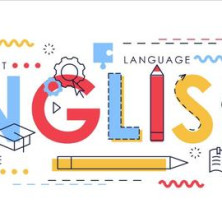
IELTS vs. TOEFL: Which should you take?
All international students who want to study in an English-speaking country must show they have the required level of English. There are a few English language exams that are accepted by universities all over the world. We’re going to focus on two of these: IELTS and TOEFL. Before we continue, let’s look at what these names mean. IELTS is the International English Language Testing System. TOEFL is the Test of English as a Foreign
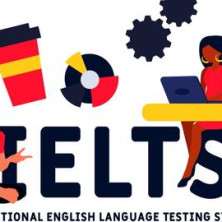
Top 20 FAQs about the IELTS exam
What is the IELTS exam? The International English Language Testing System (IELTS) is an English language exam which is recognised worldwide by more than 11,000 universities, employers and immigration government bodies. The IELTS test explained What are the benefits of the IELTS test? As mentioned above, the IELTS exam is recognised all over the world and is used for university education and immigration purposes. It’s

Applying to university: Essential documents you need
You’ll learn as an international student, that nothing can be done unless you can successfully prove who you are. In countries where immigration policy and security are of utmost importance, this can be easier said than done, with long procedures involving lots of paperwork and waiting. Originals vs. Copies However, you can make things a lot easier for yourself if you keep to hand a file containing the following important documentation. This
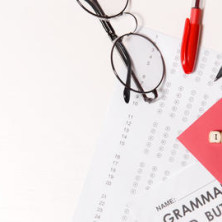
What are the benefits of the IELTS test?
As a prospective international student, you’ll know the importance of demonstrating your English language proficiency as part of the university application process. You’ll also know that several English language tests can be included as part of the entry requirements. With all of these options available, you may wonder what sets them apart, and what makes IELTS so popular. We're here to answer these questions and more, explaining the benefits of an IELTS test.

Get in touch

Reference Essay
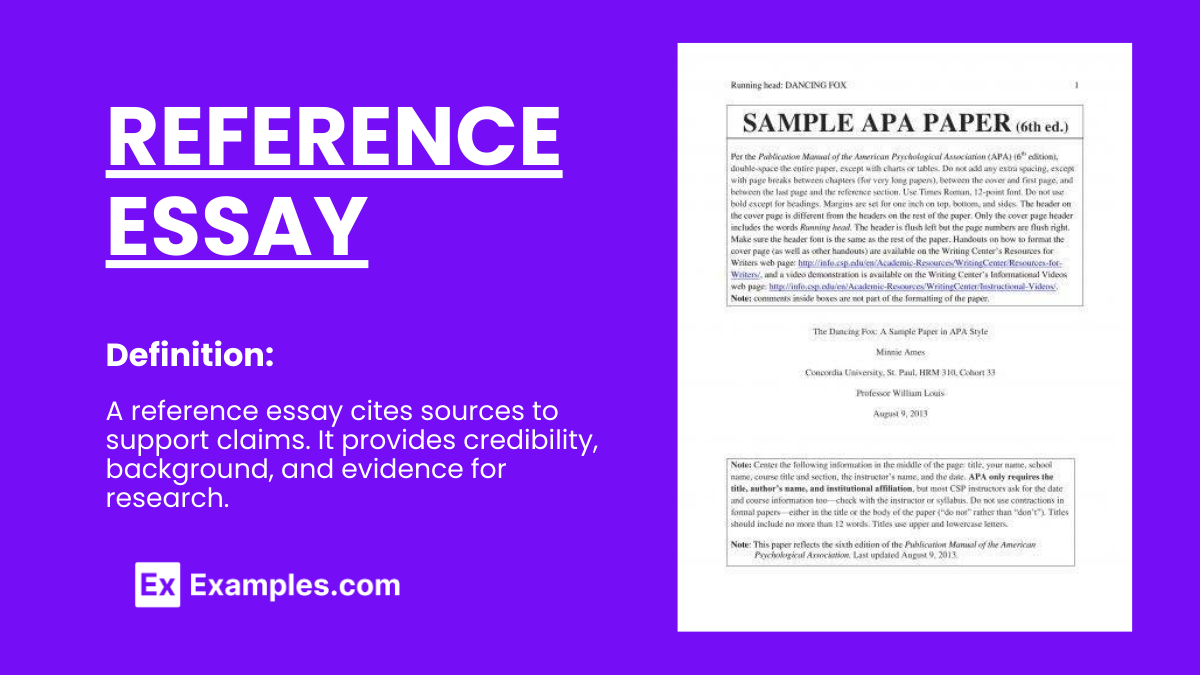
In our research, technical, or science papers, it is common that we have a lot of sources from different books and publications. We need them in order to gather some facts, ideas, images, and many other important information. You may also see essay writing examples .
Using words or ideas from other authors without acknowledging them and citing them is a form of plagiarism, the act of stealing someone’s ideas and using it as its own. This is something that every writer must avoid not only to have a good credibility but also to come up with fresh and novel ideas and notions. You may also like short essay examples & samples .
Citing the authors or the publications in your essay is one thing that you must not forget to do. There are a lot of citation styles that you can use depending on the subject area that you are working on and on the paper that you are writing, and this will be fully discussed in the succeeding sections. You may also check out what are the parts of an essay ?
For now, below are some examples of reference essays that you might find useful for your write-up. Additionally, there are other examples of essays that might interest you.
What is Reference Essay? A Reference Essay is an academic writing piece that extensively cites sources and research to support arguments, analysis, or interpretations on a specific topic. It aims to engage with existing literature, theories, or findings within a field, offering a comprehensive overview of the subject matter based on scholarly evidence.
Reference Essay Format
Title of the Essay: Clear and concise, reflecting the essay’s content. Author’s Name Institutional Affiliation Course Instructor’s Name Date
Introduction
Hook: An engaging opening sentence or question to capture the reader’s interest. Background Information: Brief context or background to the topic being discussed. Thesis Statement: A clear, concise statement of the essay’s main argument or purpose. Overview of the Essay Structure: Briefly outline what the reader can expect in the essay.
Body Paragraphs
Each body paragraph should focus on a single main idea that supports the thesis, structured as follows:
Topic Sentence: Introduces the main idea of the paragraph. Explanation/Analysis: Detailed explanation or analysis of the topic, supported by evidence from scholarly sources. Evidence: Direct quotes, paraphrases, or summaries of relevant research, properly cited. Link to the Thesis: Explain how this evidence supports your thesis. Transition: Smooth transition to the next paragraph or idea.
Summary of Main Points: Concisely restate the main arguments or findings presented in the body paragraphs. Restatement of Thesis: Restate the thesis in light of the evidence discussed. Implications: Discuss the implications of your findings or analysis. Suggestions for Further Research: Identify potential areas for future research.
Example of Reference Essay
The Impact of Social Media on Modern Communication In the digital age, social media platforms like Facebook, Twitter, and Instagram have revolutionized the way we communicate, both personally and professionally. This essay examines the profound impact social media has had on the dynamics of communication, arguing that while social media facilitates global connectivity, it also presents challenges such as the erosion of privacy and face-to-face interactions. Social media has removed geographical barriers, enabling real-time communication across the globe (Smith, 2020). Platforms like LinkedIn have also transformed professional networking, making it easier to connect with industry peers and potential employers (Johnson, 2019). Despite its advantages, social media has been criticized for diminishing the quality of face-to-face interactions (Doe, 2018). The convenience of digital communication often replaces more meaningful, personal exchanges (Brown, 2017). The proliferation of social media has raised significant privacy concerns, with personal information often being shared or sold without consent (Kumar, 2021). Furthermore, the rapid spread of misinformation on social media platforms has become a global issue, affecting public opinion and even election outcomes (White, 2020). Social media has undeniably transformed communication, making it more accessible and efficient but not without drawbacks. As we navigate this digital era, it is crucial to balance the benefits of social media with mindfulness of its potential to disrupt traditional communication and privacy norms. References Brown, A. (2017). The impact of social media on face-to-face interactions. Journal of Social Psychology , 58(2), 201-208. Doe, J. (2018). Social media’s effect on daily communication. Media Studies Journal , 45(4), 34-47. Johnson, L. (2019). Networking in the digital age: Opportunities and challenges. Professional Communication Quarterly , 63(1), 55-67. Kumar, R. (2021). Privacy in the age of social media: A critical review. Technology and Society , 39(3), 300-310. Smith, H. (2020). Global connectivity and social media: A new communicative era. Global Communication Review , 12(2), 89-105. White, G. (2020). Misinformation and social media: The effects on democracy. Political Science Today , 7(1), 112-119.
APA 6th Edition Reference Essay Example
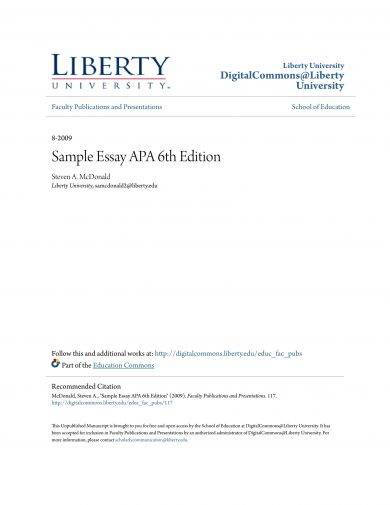
digitalcommons.liberty.edu
APA Documentation Style Reference Essay Example

hunter.cuny.edu
APA Reference Style Essay Example
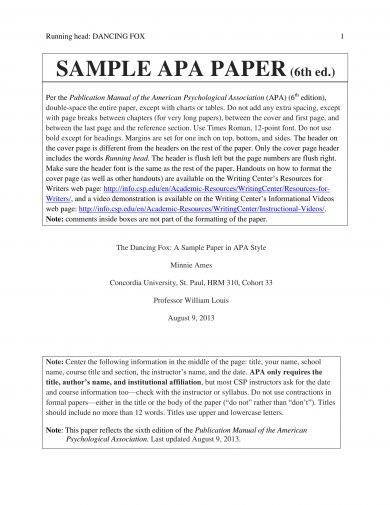
info.csp.edu
Brief Reference Essay Example
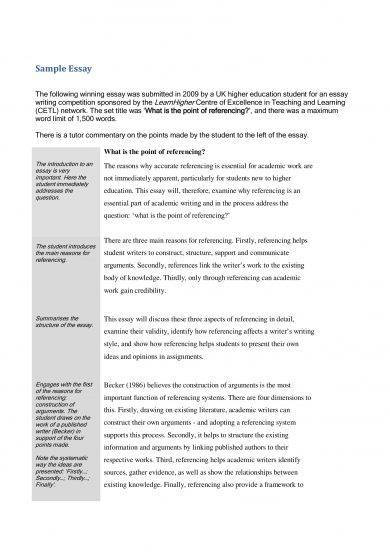
new.learnhigher.ac.uk
Chicago Style Reference Essay Example
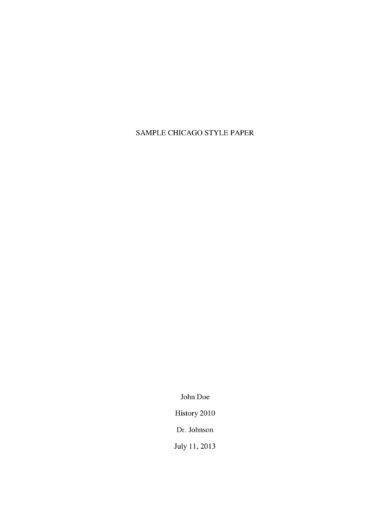
Corrected Reference Essay Paper Example
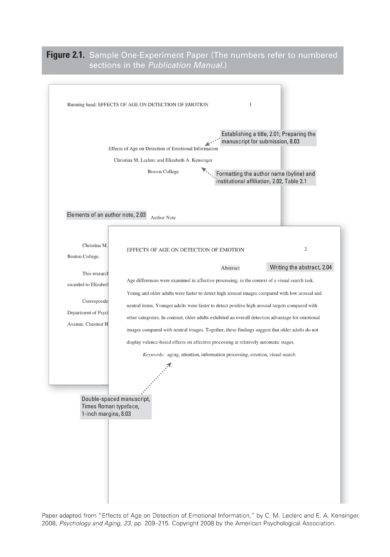
supp.apa.org
Harvard Writing Style Reference Essay Example
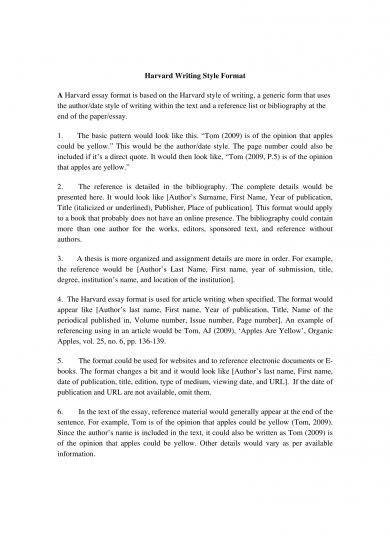
MLA Citation Reference Essay Example
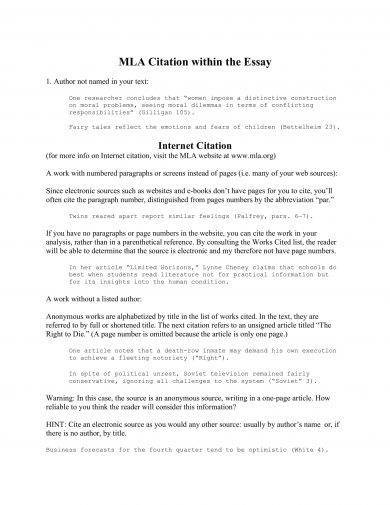
MLA-Formatted Reference Essay Example
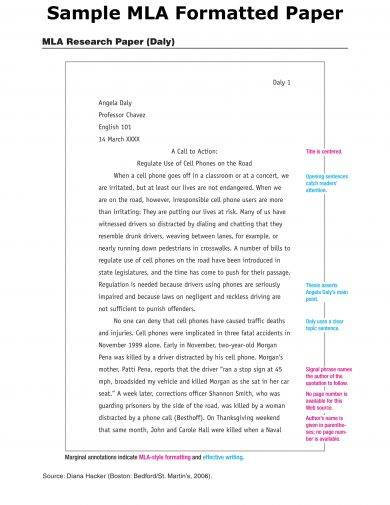
depts.washington.edu
Original Reference Essay Example
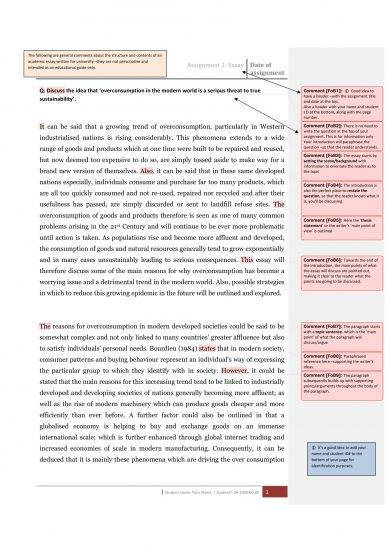
lib.uts.edu.au
Basics about Citation
A citation is a way to show within the body of your text a published work such as a book, an article, a chapter of a book, or website, informing the readers that they are your source or sources from which you took your words, ideas, figures, images, and many other important information. The details of these citations can be found in bibliographies and reference lists and are also collected in article and book databases. You may also see essay writing examples & samples .
A citation consists of standard elements, the information necessary to identify and track down a certain publication. The elements in a citation are as follows:
- author name/s
- titles of books, articles, or journals
- date of publication
- page numbers
- volume and issue numbers (for articles)
There are a lot of different presentation on this elements depending on the reference style that the author is using, and this will be discussed in the later part of this article. You may also like concept essay examples .
Importance of Citations
Citations are important in many ways because they are used:
1. To let your readers know that you’ve done proper research in order to get the information that you present in your paper
2. To be a responsible scholar by acknowledging and giving credit to other authors
3. To let your readers be informed for them to be able to track down the sources you used by citing them accurately in your paper through footnotes, a bibliography, or reference list. You may also check out sample essay outlines .
Two Key Elements of Referencing
There are two elements of referencing that you must know and apply in your papers. They are as follows:
1. An in-text marker
This indicates to the reader that certain ideas, concepts, phrases, or words are attributable to other authors.
2. A complete reference list
This provides the full citation details for all sources referred to in the document such as those basic elements of a citation mentioned in the previous section. You might be interested in tips for writing an effective essay .
Referencing Systems
There are two systems that are commonly used for referencing, and they are the following:
1. Note systems
This involves the use of sequential numbers as in-text markers such as footnotes, the notes included at the end of each page, and endnotes, the notes that can be found at the end of a paper. This is typically used in Chicago 16th Edition and Vancouver Reference Styles. You may also see descriptive essay examples .
2. Parenthetical systems
This is also known as the author-date referencing and involves the use of a partial reference, only the author and the date, contained within a parenthesis with the complete details on the last page of the whole document. This is commonly used in APA, Harvard, and MLA reference styles. You may also like persuasive essay examples & samples .
Reference Style Guide
There are different referencing or citation styles that an author can use in his or her write-up depending on the requirement or author’s preference. The common reference styles are APA, MLA, Oxford, Harvard, and Chicago Reference Styles. Here is a brief discussion with regard to the different reference styles that you can use in your paper. You may also check out self-introduction essay examples & samples .
1. APA Reference Style
In-text citation basic format.
The in-text citation must contain basic information of the source which are as follows:
- the author/s
- the year of publication
- the page number (if applicable)
For example:
When testing the usability of a website, it is necessary to gather demographic information about the users (Lazar, 2006).
This is needed when the information or idea you are using is from another source. Similarly, when you paraphrased, summarized, or quoted another author, you must also provide a citation in the text, hence, and in-text citation. You might be interested in descriptive essay examples & samples .
There are some cases when there are two different sources but the same author and year of publication are the same. To distinguish them, a lower-case letter must be attached to the year.
The quotations must be enclosed in quotation marks with the reference citation following the quotations.
When gathering data it is important to remember that “only relevant types of demographic information should be requested” (Lazar, 2006, p. 52).
Quotations must be identical to the original source, but some small changes are acceptable. You may also see informative essay examples & samples .
Reference List Format
Usually, the reference list is presented at the end of the paper. Each reference must have the following parts:
- the name of the author
- other publication information
Bowker, N., & Tuffin, K. (2002). Users with disabilities’ social and economic development through online access. In M. Boumedine (Ed.), Proceedings of the IASTED International Conference on Information and Knowledge Sharing (pp. 122–127). Anaheim, CA: ACTA Press. You may also like samples of formal essays .
2. MLA Reference Style
- the page number
Billy has the ability to relate to others with his voice (Vonnegut 36).
Similarly, this is needed when the information or idea you are using is from another source. Similarly, when you paraphrased, summarized, or quoted another author, you must also provide a citation in the text, hence, an in-text citation. You may also check out high school essay examples & samples .
Quotations must be identical to the original source, but some small changes are acceptable.
- the title of the work
- other publication information including the publishing medium
New Zealand Writers Guild. “Writing for television: A beginners guide.” New Zealand Writers Guild. 2005. Web. 28 June 2011. You might be interested in personal essay examples & samples .
3. Oxford Reference Style
The in-text citation must contain only a footnote.
In-text example:
Every living creature in the sea contains iron.
Footnote example:
Stella Cottrell, The Study Skills Handbook (Basingstoke: Palgrave Macmillan, 2013). You may also see photo essay examples & samples .
Cottrell, Stella, The Study Skills Handbook (Basingstoke: Palgrave Macmillan, 2013)
4. Harvard Reference Style
When testing the usability of a website, it is necessary to gather demographic information about the users (Lazar 2006).
This is similar to APA Reference Style but without comma between the name of the author and the date. You may also see evaluation essay examples .
Quotations must be identical to the original source, but some small changes are acceptable. You may also like analytical essay examples & samples .
- Book – the order of the elements are author, year, book title, publisher, and place of publication (for example, “Wallace, A, Schirato, T, & Bright, P 1999, Beginning university: Thinking, researching and writing for success, Allen & Unwin, St Leonards, NSW.”) You may also see academic essay examples .
- Chapter in a book – the order of elements are author, year, chapter title, editors, book title, publisher, and place of publication (for example, “Amin, A 2000, ‘The economic base of contemporary cities’, in G Bridge & S Watson (eds), A companion to the city, Blackwell, Oxford.”)
- Journal article – the order of elements are author, year, article title, journal title, volume and/or issue number, and page range (for example, “Castles, FG, Curtin, JC, & Vowles, J 2006, ‘Public policy in Australia and New Zealand: The new global context’, Australian Journal of Political Science, Vol. 41, no. 2, pp. 131–143.”) You may also like scholarship essay examples .
- Web page – the order of elements are author, year, document title, site controller/sponsor, location of controller/sponsor, date of viewing, and URL address (for example, “Benson, A 2006, Potamopyrgus antipodarum, United States Geological Survey, USA, viewed 5 August 2006, <“
5. Chicago Reference Style
Closely similar to Oxford Reference Style, in this style, the authors are identified by a number in the text, and the details are indexed in the form of a footnote or an endnote.
When a source is first used, the complete information must be presented such as the author, title, publisher, year, and page number. If it is cited again, a shortened version can be used. You may also check out argumentative essay examples .
Cottrell¹ emphasises the use of outside source materials in academic writing. When writing an assignment, this will form the crucial second step.²
The footnote or endnote will appear as follows:
1. Stella Cottrell, The Study Skills Handbook , 3rd ed. (New York: Palgrave Macmillan, 2008), 181. 2. Cottrell, The Study Skills Handbook , 176.
- Book – the order of elements are author, book title, city of publication, publisher name, year, page number (for example, “Mason Durie, Ng? k?hui pou: Launching M?ori Futures (Wellington: Huia Publishers, 2003), 22.”)
- Chapter in a book – the order of elements are author, chapter title, book title, editors, page range, city of publication, publisher name, year, page number (for example, “Ash Amin, “The Economic Base of Contemporary Cities,” in A Companion to the City, ed. Gary Bridge and Sophie Watson, 115–129 (Oxford: Blackwell, 2000), 120.”) You might be interested in literary essay examples & samples .
- Journal article – the order of elements are author, article title, journal title, volume number, issue number, year, page range (for example, “Francis G. Castles, Jennifer Curtin, and Jack Vowles, “Public Policy in Australia and New Zealand: The New Global Context,” Australian Journal of Political Science 41, no. 2 (2006): 135.”) You may also see synthesis essay examples & samples .
- Web page – the order of elements are author, page title, site owner, and URL address (for example, “A. Benson, “Potamopyrgus antipodarum,” United States Geological Survey, “
These are the common reference styles that you can use in your paper, and hopefully the discussion and examples presented above enlightened you and helped you a lot.
How to Write Reference Essay
Writing a reference essay involves a detailed process of research, analysis, and synthesis of information from various sources to support your arguments or insights on a specific topic. Here’s a structured approach to crafting a comprehensive reference essay:
1. Choose Your Topic
Select a topic that interests you and is relevant to your study or assignment. Ensure it’s broad enough to research but narrow enough to manage within your essay’s scope.
2. Conduct Preliminary Research
Begin with general sources to gain a broad understanding of your topic. Use academic databases, books, and reputable online sources to gather background information and identify key themes, debates, and researchers in the field.
3. Develop a Thesis Statement
Formulate a clear thesis statement that presents your main argument or perspective on the topic. This statement will guide the direction of your essay and help focus your research.
4. Conduct Detailed Research
Dive deeper into your topic by seeking out specific studies, articles, and scholarly discussions related to your thesis. Look for sources that both support and contradict your perspective to ensure a balanced argument.
5. Create an Outline
Organize your main points and supporting evidence into an outline. This will serve as a roadmap for your essay, helping to ensure a logical flow of ideas.
6. Write the Introduction
Introduce your topic, providing necessary background information to contextualize your essay. Clearly state your thesis statement and briefly outline the main points you will cover.
7. Write the Body Paragraphs
Each body paragraph should focus on a single main idea that supports your thesis. Begin with a topic sentence, followed by evidence from your research, analysis of this evidence, and a concluding sentence that ties the evidence back to your main argument. Properly cite all sources using the required citation style.
8. Write the Conclusion
Summarize the main points of your essay and restate your thesis in light of the evidence you’ve presented. Discuss the implications of your findings and suggest areas for further research.
9. Include References
Provide a comprehensive list of all the sources cited in your essay. Follow the specific formatting guidelines (APA, MLA, Chicago, etc.) for listing references.
How do you reference a source in an essay?
To reference a source in an essay, include an in-text citation within the body that corresponds to a full citation in your bibliography or reference list at the essay’s end.
How do I cite a reference?
To cite a reference, use the prescribed citation style (APA, MLA, Chicago, etc.), providing author name(s), publication year, title, and source details (e.g., volume, issue, pages for journals).

Reference Essay Generator
Text prompt
- Instructive
- Professional
Write a Reference Essay on the influence of Greek mythology on modern literature.
Discuss the role of references in establishing credibility in academic writing in your Reference Essay.
Your path to academic success
Improve your paper with our award-winning Proofreading Services , Plagiarism Checker , Citation Generator , AI Detector & Knowledge Base .
Proofreading & Editing
Get expert help from Scribbr’s academic editors, who will proofread and edit your essay, paper, or dissertation to perfection.
Plagiarism Checker
Detect and resolve unintentional plagiarism with the Scribbr Plagiarism Checker, so you can submit your paper with confidence.
Citation Generator
Generate accurate citations with Scribbr’s free citation generator and save hours of repetitive work.
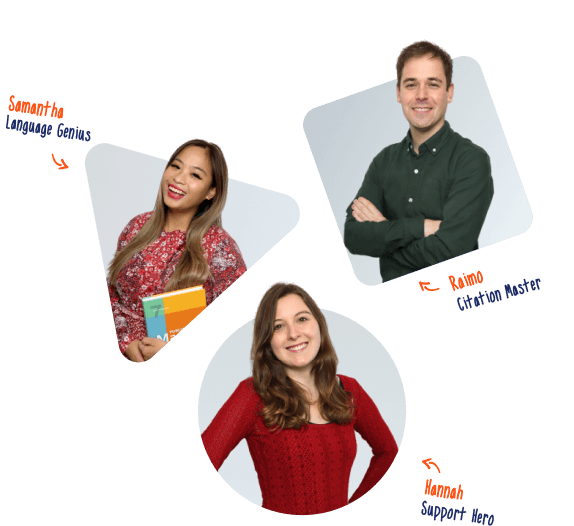
Happy to help you
You’re not alone. Together with our team and highly qualified editors , we help you answer all your questions about academic writing.
Open 24/7 – 365 days a year. Always available to help you.
Very satisfied students
This is our reason for working. We want to make all students happy, every day.
Scribbr hold their promise of 100% satisfaction guarantee. They responded quickly on my complains and gave a solution to my problem. ve
Scribbr hold their promise of 100% satisfaction guarantee. They responded quickly on my complains and gave a solution to my problem. Thank you for this.
Very good bajajsvajajwnnss
Very helpful
Very helpful, constructive comments!
Easy, fast and elegant too
A really great experience with Scribbr - I needed to get a second proofreader to finish proofing my PhD thesis due to the illness of my initial editor. I was a bit nervous about sending off only two disconnected sections of the document, but the system allowed me to a) choose what pages to submit (so I actually hadn't needed to prep a special partial document), and b) give some context to the editor. It was all very clear. Neshika did a fantastic job, and even delivered a little early on a rush-job deadline. Her comments were professional but human, with a clear sense of her personality coming through and she explained the principles behind changes very clearly. Her edits not only improved clarity, but were elegantly worded too. Worth every penny. Thank you!
based on the study
great experience they helped me with my…
great experience they helped me with my paper and lost my cat
I like it way better than…
I like it way better than citationmachine.net on citation machine you cant even create a citation without something popping up then you click out of it and you lose everything you put in it to create the citation. and something popping up, not even a second after you click out of it to go back to creating the citation.
Trusted. This is my 7th manuscript submission to Scribbr and they helped me a lot in improving the quality of my English. The editor also provides several tips that need to be considered in order to clarify sentences. Happy working with scribbr.
Thanks to the editor
Alexandra edited my sloppy text with great attention. She propose how to clarify a lot of vague places. She made me valuable notes to think about sense and language of my text. Her help significantly improved my text, not only in terms of language, but also in its sence, so I thank her very much.
Outstanding job!
The individual who proofread my paper provided great feedback. I am very grateful for the amount of time spent reviewing and critiquing the document. I would love to use him again. Thanks so much.
A Surprisingly Personalized Touch: Beyond Expectations with Doug
I was nervous about utilizing an online service because I assumed the edits would be stiff and not aligned with my tone and writing style. However, the edits were insightful and very much aligned with my style. I would recommend this service to everyone! My editor, Doug, was exceptional AND I received it 3 days early! Thank you!
nnnnnnnnnnnnnnnnnnnnnnnnnnnnnnnnnnn
It smells good
Very clear instruction on what I'm…
Very clear instruction on what I'm supposed to do in the document.
Thank You! You did a great job!
Fantastic service
Fantastic service. My essay was proofread and the structure edited to perfection. It left me with an essay that flowed well with no duplication. Thanks Brandy
This employee deserves a raise!!!
An essay for a scholarship I am applying for got flagged as 100% AI generated, after I had spent hours perfecting it. I had to use the help option, and the employee that helped me was great. Their name on the website was Willemijn, and they helped me all the way through, and explained that AI detectors, even those used by prestigious universities, are not 100% reliable. I was able to get the number down to 65%. I thank the employee, who I don't think realized how young I am, being that I am only 16. They were very understanding and polite, and they deserve to be rewarded somehow. Thank you, Willemijn, from a stressed out high school girl.
Great experience.
The turnaround on my paper was fast and efficient. I was pleased with the quality of the work and the professionalism.
Once again they did not disappoint! 24 hour timeline, got it done perfectly! Cannot say enough good things about them! I have used scribbr a few times and I wouldn’t hesitate to use them again! Thank you!
The feedback was relevant and clear
The feedback was relevant and very clear. We followed almost every proposal.
Everything you need to write an A-grade paper
Free resources used by 5,000,000 students every month.
Bite-sized videos that guide you through the writing process. Get the popcorn, sit back, and learn!
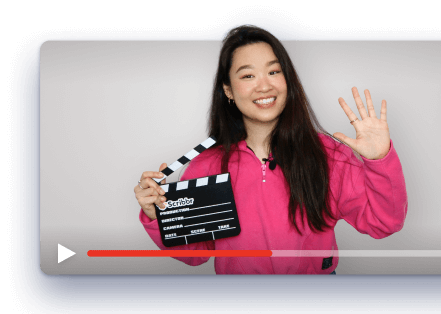
Lecture slides
Ready-made slides for teachers and professors that want to kickstart their lectures.
- Academic writing
- Citing sources
- Methodology
- Research process
- Dissertation structure
- Language rules
Accessible how-to guides full of examples that help you write a flawless essay, proposal, or dissertation.

Chrome extension
Cite any page or article with a single click right from your browser.
Time-saving templates that you can download and edit in Word or Google Docs.
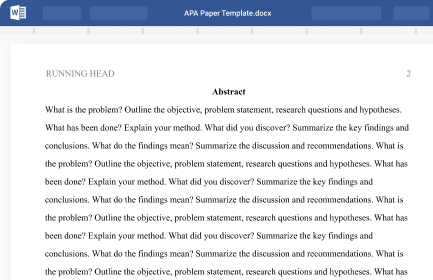
Help you achieve your academic goals
Whether we’re proofreading and editing , checking for plagiarism or AI content , generating citations, or writing useful Knowledge Base articles , our aim is to support students on their journey to become better academic writers.
We believe that every student should have the right tools for academic success. Free tools like a paraphrasing tool , grammar checker, summarizer and an AI Proofreader . We pave the way to your academic degree.
Ask our team
Want to contact us directly? No problem. We are always here for you.
- Email [email protected]
- Start live chat
- Call +1 (510) 822-8066
- WhatsApp +31 20 261 6040

Frequently asked questions
Our team helps students graduate by offering:
- A world-class citation generator
- Plagiarism Checker software powered by Turnitin
- Innovative Citation Checker software
- Professional proofreading services
- Over 300 helpful articles about academic writing, citing sources, plagiarism, and more
Scribbr specializes in editing study-related documents . We proofread:
- PhD dissertations
- Research proposals
- Personal statements
- Admission essays
- Motivation letters
- Reflection papers
- Journal articles
- Capstone projects
Scribbr’s Plagiarism Checker is powered by elements of Turnitin’s Similarity Checker , namely the plagiarism detection software and the Internet Archive and Premium Scholarly Publications content databases .
The add-on AI detector is powered by Scribbr’s proprietary software.
The Scribbr Citation Generator is developed using the open-source Citation Style Language (CSL) project and Frank Bennett’s citeproc-js . It’s the same technology used by dozens of other popular citation tools, including Mendeley and Zotero.
You can find all the citation styles and locales used in the Scribbr Citation Generator in our publicly accessible repository on Github .
- The Open University
- Guest user / Sign out
- Study with The Open University
My OpenLearn Profile
Personalise your OpenLearn profile, save your favourite content and get recognition for your learning
About this free course
Become an ou student, download this course, share this free course.
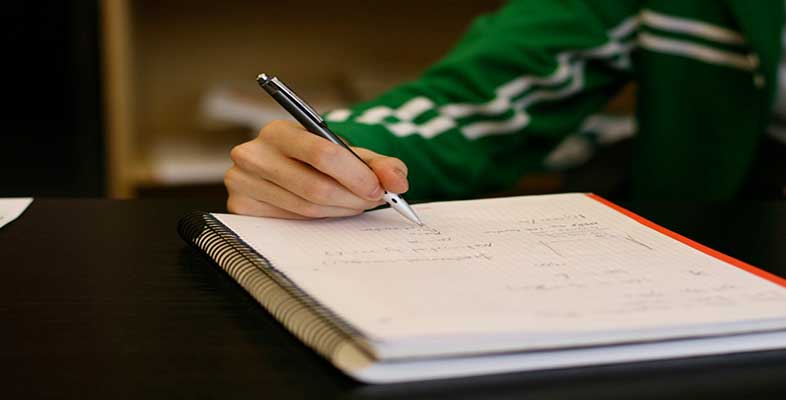
Start this free course now. Just create an account and sign in. Enrol and complete the course for a free statement of participation or digital badge if available.
Scribbr Referencing Generator
Accurate Harvard, APA, MLA, and Chicago references, verified by experts, trusted by millions.
Reference sources in seconds with Autocite
Look up your source by its title, URL, ISBN, or DOI, and let Scribbr do the rest! The reference generator will automatically find all the necessary information to generate a perfect reference, including the author(s), publication date, and publisher.
Perfectly formatted references every time
Inaccurate references can cost you points on your assignments, so our seasoned referencing experts have invested countless hours in perfecting Scribbr’s reference generator algorithms. We’re proud to be recommended by teachers and universities across the UK.
Enjoy a referencing generator without flashy ads
Staying focused is already difficult enough, so unlike other reference generators, Scribbr won’t slow you down with flashing banner ads and video pop-ups. That’s a promise!
Citation Generator features you'll love
Look up your source by its title, URL, ISBN, or DOI, and let Scribbr find and fill in all the relevant information automatically.
Harvard, APA, MLA, Chicago
Generate flawless references according to the official Harvard , APA , MLA, or Chicago style rules. More referencing styles will be available soon!
Export to Word
When your reference list is complete, export it to Word. We’ll apply the official formatting guidelines automatically.
Lists and folders
Create separate reference lists for each of your assignments to stay organized. You can also group related lists into folders.
Export to Bib(La)TeX
Are you using a LaTex editor like Overleaf? If so, you can easily export your references in Bib(La)TeX format with a single click.
Custom fonts
Change the typeface used for your reference list to match the rest of your document. Options include Times New Roman, Arial, and Calibri.
Industry-standard technology
Scribbr’s Referencing Generator is built using the same citation software (CSL) as Mendeley and Zotero, but with an added layer for improved accuracy.
Annotations
Describe or evaluate your sources in annotations, and Scribbr will generate a perfectly formatted annotated bibliography.
Referencing guides
Scribbr’s popular guides and videos will help you understand everything related to finding, evaluating, and referencing sources.
Secure backup
Your work is saved automatically after every change and stored securely in your Scribbr account.
- Introduction
- Finding sources
Evaluating sources
- Integrating sources
Referencing sources
Tools and resources, a quick guide to working with sources.
Working with sources is an important skill that you’ll need throughout your academic career.
It includes knowing how to find relevant sources, assessing their authority and credibility, and understanding how to integrate sources into your work with proper referencing.
This quick guide will help you get started!
Finding relevant sources
Sources commonly used in academic writing include academic journals, scholarly books, websites, newspapers, and encyclopedias. There are three main places to look for such sources:
- Research databases: Databases can be general or subject-specific. To get started, check out this list of databases by academic discipline . Another good starting point is Google Scholar .
- Your institution’s library: Use your library’s database to narrow down your search using keywords to find relevant articles, books, and newspapers matching your topic.
- Other online resources: Consult popular online sources like websites, blogs, or Wikipedia to find background information. Be sure to carefully evaluate the credibility of those online sources.
When using academic databases or search engines, you can use Boolean operators to refine your results.
Generate Harvard, APA, MLA, and Chicago style references in seconds
Get started
In academic writing, your sources should be credible, up to date, and relevant to your research topic. Useful approaches to evaluating sources include the CRAAP test and lateral reading.
CRAAP is an abbreviation that reminds you of a set of questions to ask yourself when evaluating information.
- Currency: Does the source reflect recent research?
- Relevance: Is the source related to your research topic?
- Authority: Is it a respected publication? Is the author an expert in their field?
- Accuracy: Does the source support its arguments and conclusions with evidence?
- Purpose: What is the author’s intention?
Lateral reading
Lateral reading means comparing your source to other sources. This allows you to:
- Verify evidence
- Contextualize information
- Find potential weaknesses
If a source is using methods or drawing conclusions that are incompatible with other research in its field, it may not be reliable.
Integrating sources into your work
Once you have found information that you want to include in your paper, signal phrases can help you to introduce it. Here are a few examples:
Following the signal phrase, you can choose to quote, paraphrase or summarize the source.
- Quoting : This means including the exact words of another source in your paper. The quoted text must be enclosed in quotation marks or (for longer quotes) presented as a block quote . Quote a source when the meaning is difficult to convey in different words or when you want to analyze the language itself.
- Paraphrasing: This means putting another person’s ideas into your own words. It allows you to integrate sources more smoothly into your text, maintaining a consistent voice. It also shows that you have understood the meaning of the source.
- Summarizing : This means giving an overview of the essential points of a source. Summaries should be much shorter than the original text. You should describe the key points in your own words and not quote from the original text.
Whenever you quote, paraphrase, or summarize a source, you must include a citation crediting the original author.
Referencing your sources is important because it:
- Allows you to avoid plagiarism
- Establishes the credentials of your sources
- Backs up your arguments with evidence
- Allows your reader to verify the legitimacy of your conclusions
The most common citation styles in the UK are APA, MLA, Harvard, Vancouver, MHRA, and Oscola. Each citation style has specific rules for formatting citations.
Scribbr’s free Reference Generator can generate perfect references and in-text citations in both APA and MLA styles. More citation styles will be available soon!
Scribbr and partners offer tons of tools and resources to make working with sources easier and faster. Take a look at our top picks:
- Reference Generator: Automatically generate Harvard and APA references .
- Plagiarism Checker : Detect plagiarism in your paper using the most accurate Turnitin-powered plagiarism software available to students.
- Proofreading services : Have a human editor improve your writing.
- Knowledge Base : Explore hundreds of articles, bite-sized videos, time-saving templates, and handy checklists that guide you through the process of research, writing, and citation.
- Free Tools for Students
- Harvard Referencing Generator
Free Harvard Referencing Generator
Generate accurate Harvard reference lists quickly and for FREE, with MyBib!
🤔 What is a Harvard Referencing Generator?
A Harvard Referencing Generator is a tool that automatically generates formatted academic references in the Harvard style.
It takes in relevant details about a source -- usually critical information like author names, article titles, publish dates, and URLs -- and adds the correct punctuation and formatting required by the Harvard referencing style.
The generated references can be copied into a reference list or bibliography, and then collectively appended to the end of an academic assignment. This is the standard way to give credit to sources used in the main body of an assignment.
👩🎓 Who uses a Harvard Referencing Generator?
Harvard is the main referencing style at colleges and universities in the United Kingdom and Australia. It is also very popular in other English-speaking countries such as South Africa, Hong Kong, and New Zealand. University-level students in these countries are most likely to use a Harvard generator to aid them with their undergraduate assignments (and often post-graduate too).
🙌 Why should I use a Harvard Referencing Generator?
A Harvard Referencing Generator solves two problems:
- It provides a way to organise and keep track of the sources referenced in the content of an academic paper.
- It ensures that references are formatted correctly -- inline with the Harvard referencing style -- and it does so considerably faster than writing them out manually.
A well-formatted and broad bibliography can account for up to 20% of the total grade for an undergraduate-level project, and using a generator tool can contribute significantly towards earning them.
⚙️ How do I use MyBib's Harvard Referencing Generator?
Here's how to use our reference generator:
- If citing a book, website, journal, or video: enter the URL or title into the search bar at the top of the page and press the search button.
- Choose the most relevant results from the list of search results.
- Our generator will automatically locate the source details and format them in the correct Harvard format. You can make further changes if required.
- Then either copy the formatted reference directly into your reference list by clicking the 'copy' button, or save it to your MyBib account for later.
MyBib supports the following for Harvard style:
🍏 What other versions of Harvard referencing exist?
There isn't "one true way" to do Harvard referencing, and many universities have their own slightly different guidelines for the style. Our generator can adapt to handle the following list of different Harvard styles:
- Cite Them Right
- Manchester Metropolitan University (MMU)
- University of the West of England (UWE)

Daniel is a qualified librarian, former teacher, and citation expert. He has been contributing to MyBib since 2018.
Department of History
Essay writing and referencing, in this section:, essay writing checklist, referencing, presentation.
Here are some of the things you need to think about in preparing an essay. Few of them are iron rules. Good essays come in many forms, and a good essay writer will sometimes ignore some of these guidelines. But to become a good essay writer you would probably do well to start by following them.
Please remember that writing an essay involves skills of discussion and argument which differ from those that might be used in the informal setting of a seminar. In the first place, argument and analysis in essays will usually have to be more carefully structured than the comments you might make in a seminar or tutorial discussion. In essays, you should demonstrate awareness of more than one argument, acknowledge differences in the views of historians, and adopt a critical appreciation of evidence and its sources. You should also provide the necessary scholarly underpinning for your analysis by showing the sources of your information and arguments in bibliographies and footnotes.
On questions of presentation, footnoting, etc. you should follow the advice given from the department.
The Essay Question
- Have you really answered the question?
- Have you thought what might lie behind the question, e.g. if it asks 'Was the First World War the main cause of the Russian Revolution?', have you thought about what alternative explanations might be suggested?
- Is each paragraph clearly related to the overall question, raising a new topic and moving the argument forward?
- The ultimate test is that if you left the title off the top of your essay, could a friend guess the question from your answer?
Your Analysis
- Have you made an argument or is the essay simply relating what happened?
- Is your argument logical, coherent and clear?
- Are you contradicting yourself?
- Are you using appropriate evidence to back up each part of your argument?
- Are you aware of counter-arguments?
- Have you combined evidence and ideas from several different sources at each stage of the argument, or are you merely summarising what your sources say one by one?
Your Research
- Have you done enough reading? Six books/article/chapters is suggested for a short essay; ten or more for a long one.
- Are you up to date on the historical debate? Do not rely only on the older texts.
- Have you listed in the bibliography all the sources you used, and only those sources?
Why reference?
From reading academic articles and books, you should be familiar with the scholarly practice of making references in the text to other people's work and providing listings of relevant source material at the end of the text.
Why is this done?
- To enable someone reading the document to find the material you have referred to or consulted
- To demonstrate your width of reading and knowledge about a subject
- To support and/or develop points made in the text
- To avoid accusations of plagiarism: using somebody else's work without acknowledging the fact
Citation style
A citation style is a system for formatting references, whether in the main text of an essay, in the footnotes, or in the bibliography. It covers such things as the order of information in the citation style, the length of the citation, and the use of capitalisation and italics.
A common style used in the humanities is known as the MHRA style, so-called because it is administered by the Modern Humanities Research Association, a scholarly association based in the UK. Below are some examples of citations formatted in the MHRA style.
Tom McArthur, Worlds of Reference: Lexicography, Learning and Language from the Clay Tablet to the Computer (Cambridge: Cambridge University Press, 1986), p. 59.
A chapter in an edited book:
Martin Elsky, ‘Words, Things, and Names: Jonson’s Poetry and Philosophical Grammar’, in Classic and Cavalier: Essays on Jonson and the Sons of Ben , ed. by Claude J. Summers and Ted-Larry Pebworth (Pittsburgh: University of Pittsburgh Press, 1982), pp. 31–55 (p. 41).
A journal article:
Robert F. Cook, ‘Baudouin de Sebourc: un poème édifiant?’, Olifant , 14 (1989), 115–35 (pp. 118–19).
These examples are taken from the MHRA Style Guide, the third (2013) edition of which is available here . For a short summary of the guide, see pages 3 to 8. For more detail on referencing, see pages 58 to 82.
Another citation style often used by historians is the one in the Chicago Manual of Style , published by the University of Chicago Press and currently in its seventeenth edition. This style is subtly different from the MHRA style, as you can see by comparing these citations with the ones above:
Tom McArthur, Worlds of Reference: Lexicography, Learning and Language from the Clay Tablet to the Computer (Cambridge: Cambridge University Press, 1986), 59.
Martin Elsky, “Words, Things, and Names: Jonson’s Poetry and Philosophical Grammar,” in Classic and Cavalier: Essays on Jonson and the Sons of Ben , ed. Claude J. Summers and Ted-Larry Pebworth (Pittsburgh: University of Pittsburgh Press, 1982), 41.
Robert F. Cook, “Baudouin de Sebourc: un poème édifiant?”, Olifan t 14 (1989): 118–19.
Which citation style should you use? The History Department does not favour one particular style, but it does require that students:
- Use the same style throughout any given essay
- Use a recognised style for citations rather than inventing your own style – the MHRA and Chicago style guides are examples.
- Use footnotes for citations rather than in-text citations, such as the in-text citation style administered by the American Psychological Association (the APA style is widely used in the social sciences but rarely in the humanities)
- Include a bibliography at the end of each essay, ie. a list of the works you have cited in the course of the essay
The Department has no rules about how assessments should be presented and formatted. What is important is to ensure that your writing is clearly readable on a screen, which makes it easier for markers to focus on the merits of your argument and writing rather than be distracted by poor presentation. Please check with your tutor in case there are specific requirements for a particular module. If you aren’t sure where to begin, the following are suggested guidelines for how you might format and present your assessments:
- Your font should usually be font size 12 in a standard font (e.g., Arial, Calibri or Times New Roman).
- There should be standard margins (e.g., the default for Microsoft Word is 2.54cm) on all sides of the page.
- The line spacing for the text of your essay should be double-spaced.
- The line spacing for the footnotes should, however, be single-spaced.
- Work should be left aligned or justified, rather than centred or right aligned.
- Number each page of your essay.
- Title pages and/or coversheets are not required, but you should include the title or question at the beginning of the assessment.
- Numbers up to one hundred, when occurring in normal writing, should be written out in words rather than numerals.
- When there are many figures, it is better to use words only for numbers up to nine.
- Spell out 'per cent' rather than using the % sign in your text.
- Instead of (for example) '22nd of June 1941', the correct format for dates would be '22 June 1941'.

COMMENTS
Tip: Learn more about how to write an academic essay with references to websites. How Do You Cite a Tweet in APA? APA refers to Tweets using their first 20 words. Tweet references should be formatted as follows: Author, A. A. [@twitterhandle). (Year, Month. date of publication). First 20 words of the. Tweet. [Tweet] Twitter. URL
Quotes should always be cited (and indicated with quotation marks), and you should include a page number indicating where in the source the quote can be found. Example: Quote with APA Style in-text citation. Evolution is a gradual process that "can act only by very short and slow steps" (Darwin, 1859, p. 510).
9. Do one special edit especially for Referencing Style. The top students edit their essays three to five times spaced out over a week or more before submitting. One of those edits should be specifically for ensuring your reference list adheres to the referencing style that your teacher requires.
When you cite a source with up to three authors, cite all authors' names. For four or more authors, list only the first name, followed by ' et al. ': Number of authors. In-text citation example. 1 author. (Davis, 2019) 2 authors. (Davis and Barrett, 2019) 3 authors.
In-text citations are quick references to your sources. In Harvard referencing, you use the author's surname and the date of publication in brackets. Up to three authors are included in a Harvard in-text citation. If the source has more than three authors, include the first author followed by ' et al. '.
4. Format the page. Double-space your document, and title the references page "References" at the top-center of the page. Put the page number all the way to the right, and a shortened version of the title of your paper all the way to the left in all capital letters.
You should write the surname (last name) first followed by any initials. If there are more than three authors then you can cite the first author and use the abbreviation 'et al', meaning 'and all'. Examples: For one, two or three authors: Jones A, Davies B, Jenkins C. For more than three authors. Jones A et al.
APA Style is widely used by students, researchers, and professionals in the social and behavioural sciences. The Scribbr APA Reference Generator automatically generates accurate references and in-text citations for free. This citation guide outlines the most important citation guidelines from the 7th edition APA Publication Manual (2020).
Essay writing basics. Referencing is a system that allows you to acknowledge the contributions and work of others in your writing by citing your sources. A feature of academic writing is that it contains references to the words, information and ideas of others. All academic essays MUST contain references. Referencing guards against plagiarism ...
A referencing style is a set of rules on how to acknowledge the thoughts, ideas and works of others in a particular way. Referencing is a crucial part of successful academic writing, avoiding plagiarism and maintaining academic integrity in your assignments and research [1]. You will need the author's name (all authors); the year of ...
General guidelines for referring to the works of others in your essay Author/Authors How to refer to authors in-text, including single and multiple authors, unknown authors, organizations, etc. ... Resources on writing an APA style reference list, including citation formats. Basic Rules Basic guidelines for formatting the reference list at the ...
There are different versions of the Harvard referencing style. This guide is a quick introduction to the commonly-used Cite Them Right version. You will find further guidance available through the OU Library on the Cite Them Right Database. For help and support with referencing and the full Cite Them Right guide, have a look at the Library's ...
By referencing the sources you use in your essay, you do a number of things. First of all, you comply with an academic convention. Secondly, you make your essay look more professional. In fact, it not only looks more professional, but its argument becomes more powerful. Thirdly, you allow others to check your sources.
What is referencing? Academic writing relies on more than just the ideas and experience of one author. It also uses the ideas and research of other sources: books, journal articles, websites, and so forth. These other sources may be used to support the author's ideas, or the author may be discussing, analysing, or critiquing other sources ...
date of publication - This is the date the source you have used was published (made available either in printed format or online). reference - (verb and noun) This is where you acknowledge or recognise the importance of the sources you have used in the writing of your essay. There are many ways to reference the sources used (more on this later).
5. Be consistent. Determine a system and stick to it to ensure full clarity. Inconsistent use of referencing is a distraction to the reader and indicates carelessness of thought, lack of attention, and disregard for scholarly conventions. A tidy page implies a tidy mind, and this will always score more highly. 6.
How to Write Reference Essay. Writing a reference essay involves a detailed process of research, analysis, and synthesis of information from various sources to support your arguments or insights on a specific topic. Here's a structured approach to crafting a comprehensive reference essay: 1. Choose Your Topic.
Whether we're proofreading and editing, checking for plagiarism or AI content, generating citations, or writing useful Knowledge Base articles, our aim is to support students on their journey to become better academic writers. We believe that every student should have the right tools for academic success.
Essay and report writing skills; References; Course content. Introduction. Learning outcomes. 1 Good practice in writing. 2 Identifying key concerns. 2.1 Your feelings about writing. 2.2 Developing writing styles. 3 The purpose of writing. 4 Understanding the task. 4.1 Writing requirements. 4.2 Reports.
Referencing your sources is important because it: The most common citation styles in the UK are APA, MLA, Harvard, Vancouver, MHRA, and Oscola. Each citation style has specific rules for formatting citations. Scribbr's free Reference Generator can generate perfect references and in-text citations in both APA and MLA styles.
A Harvard Referencing Generator solves two problems: It provides a way to organise and keep track of the sources referenced in the content of an academic paper. It ensures that references are formatted correctly -- inline with the Harvard referencing style -- and it does so considerably faster than writing them out manually.
A citation style is a system for formatting references, whether in the main text of an essay, in the footnotes, or in the bibliography. It covers such things as the order of information in the citation style, the length of the citation, and the use of capitalisation and italics. A common style used in the humanities is known as the MHRA style ...